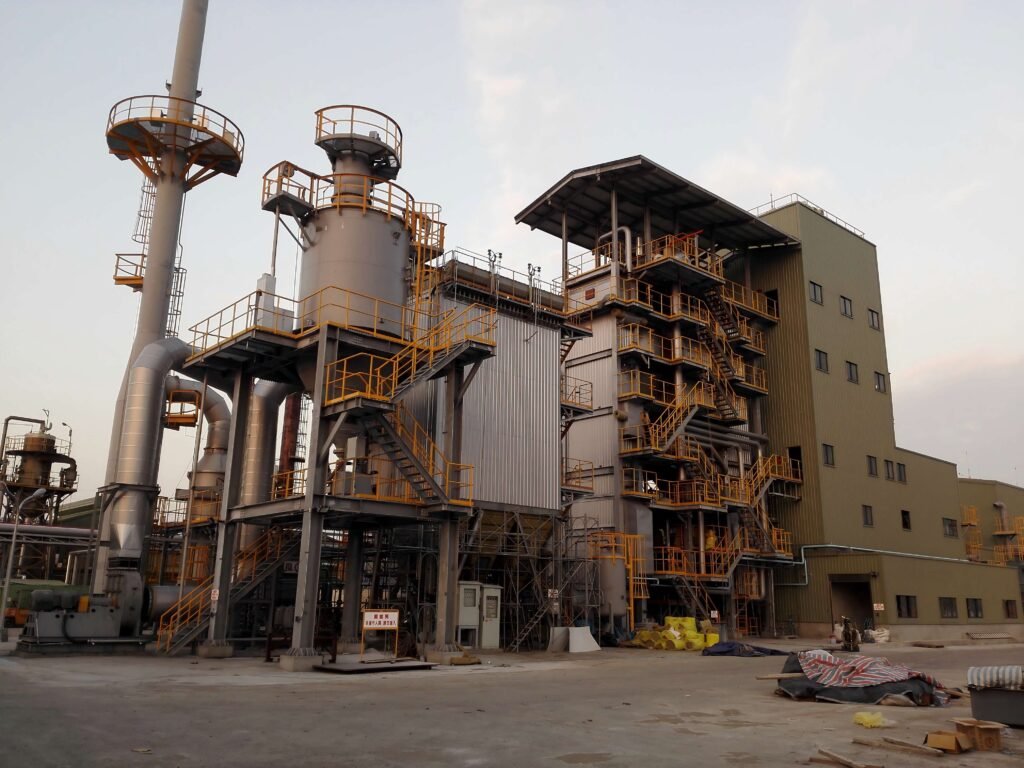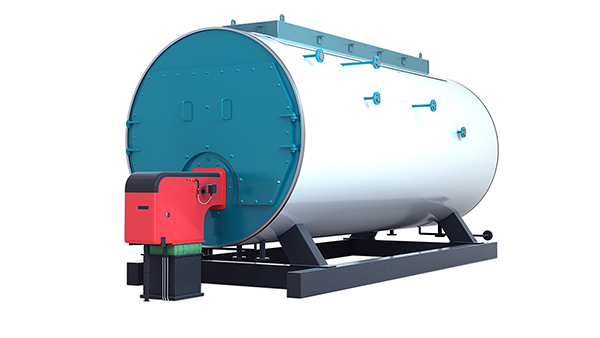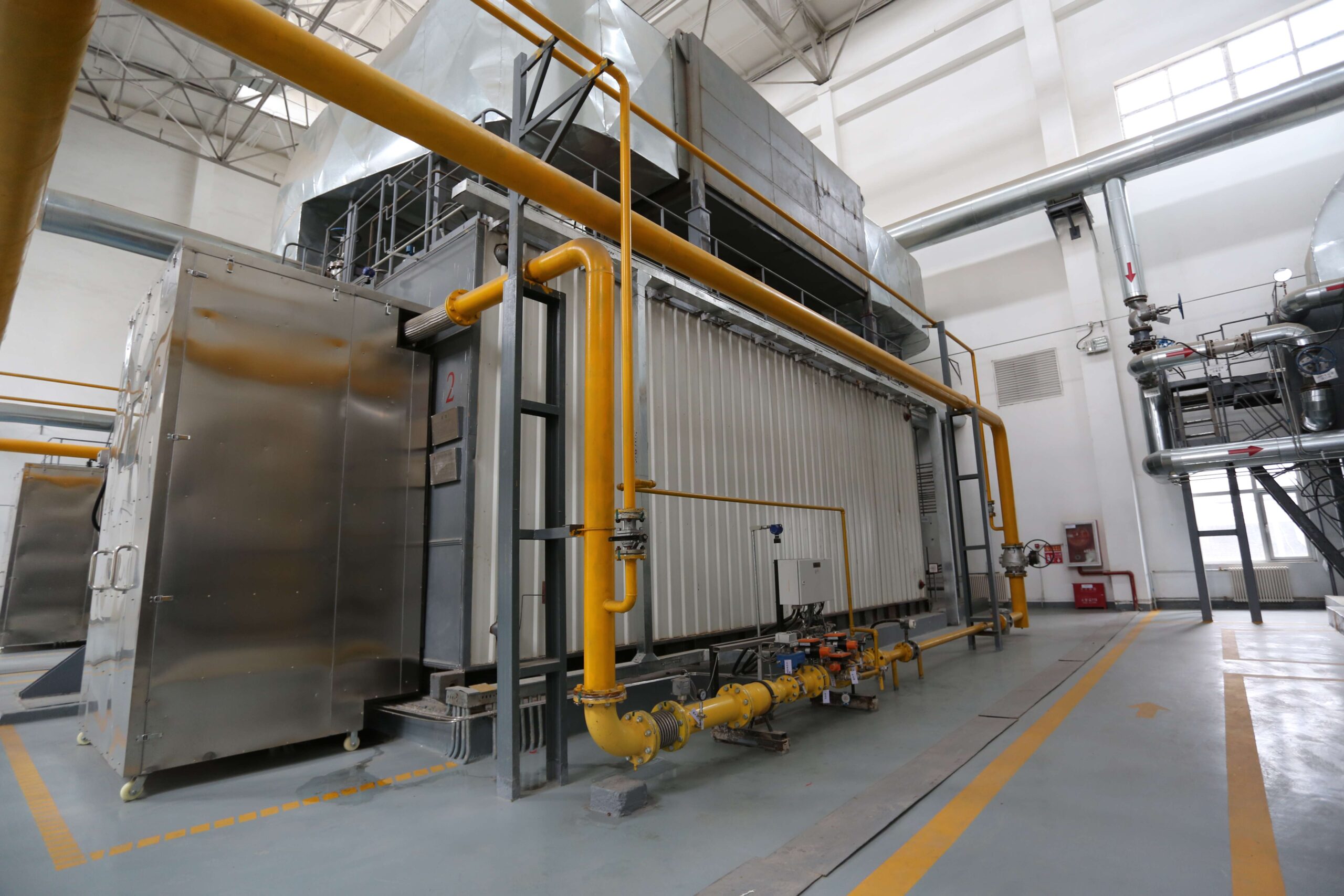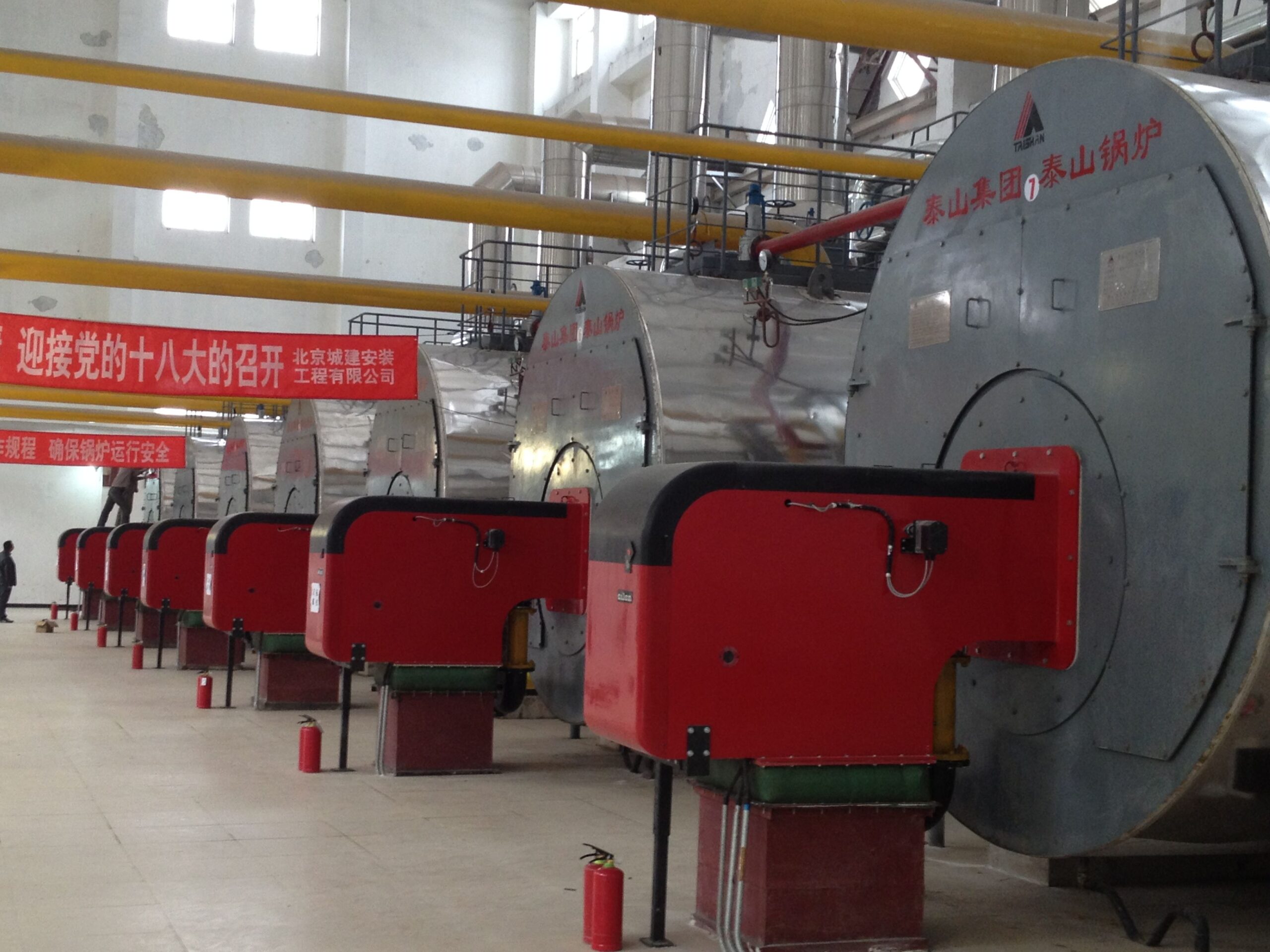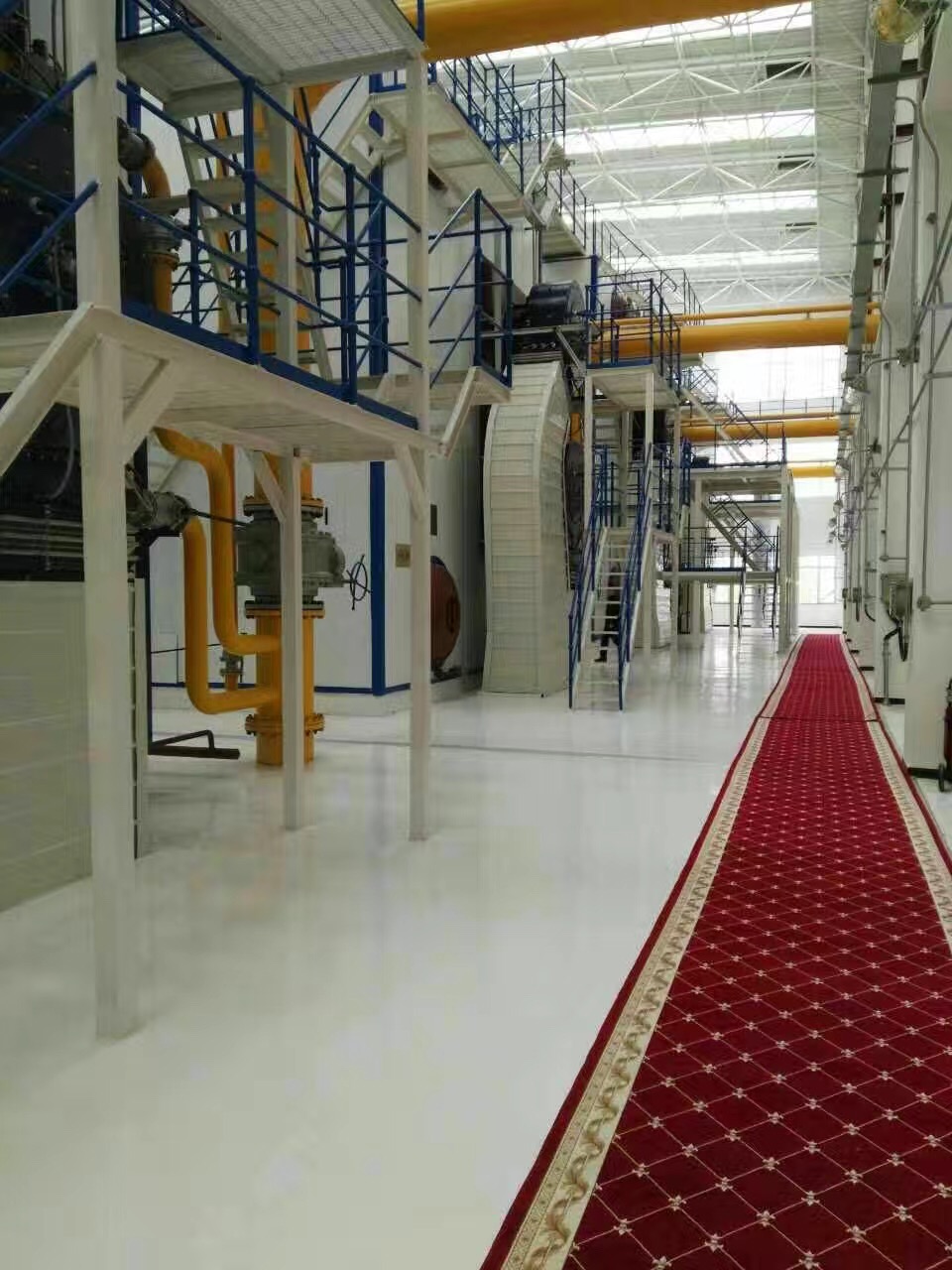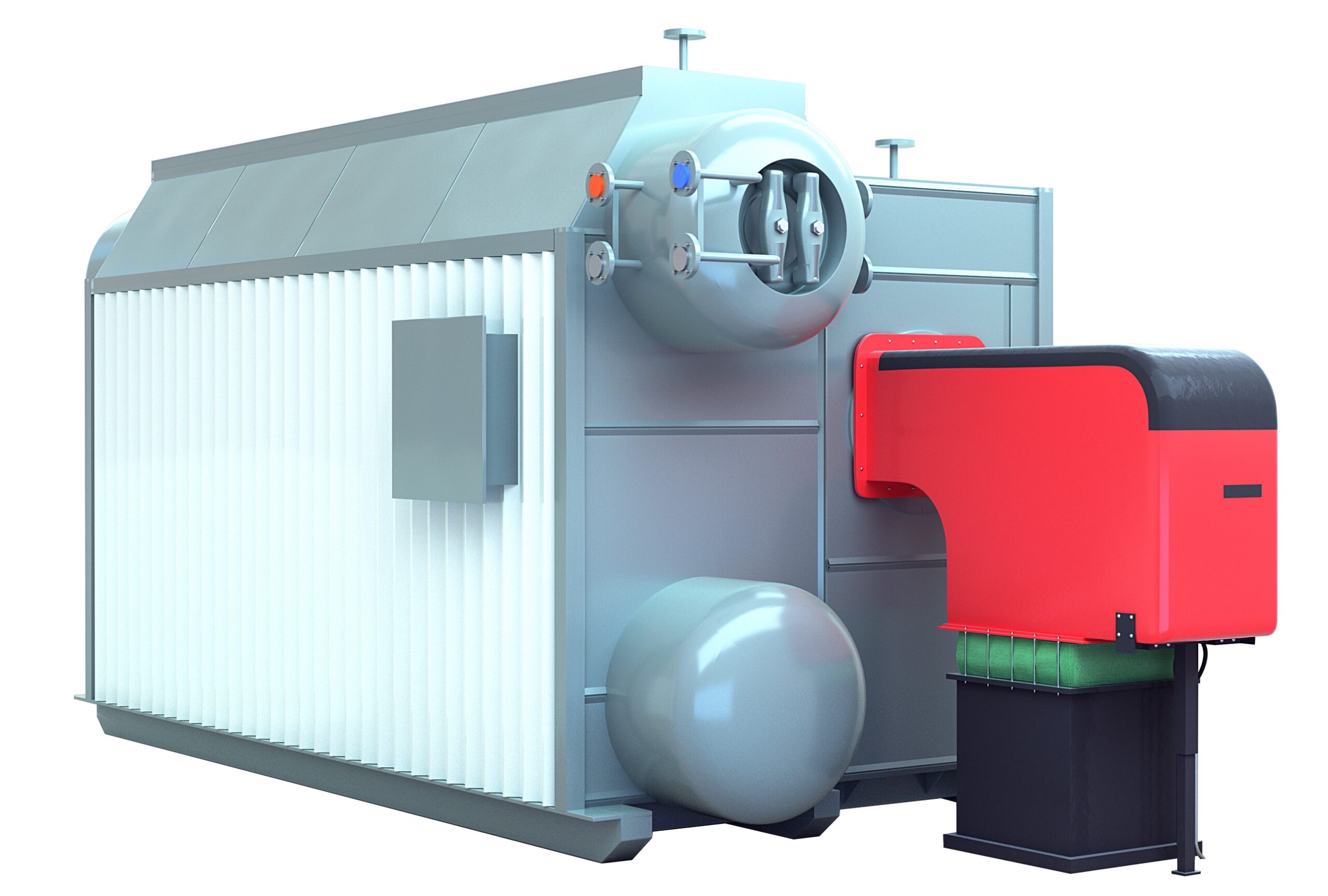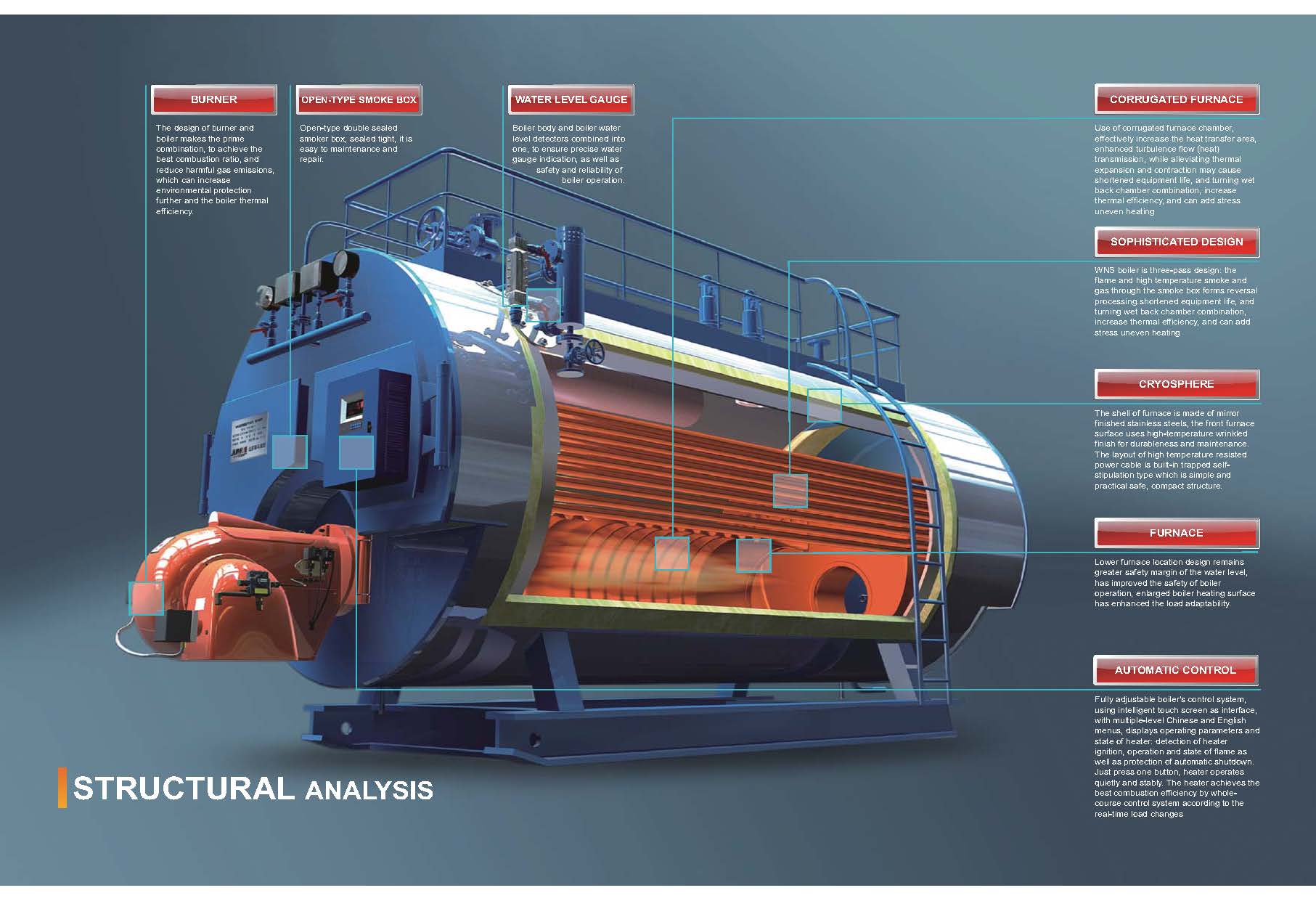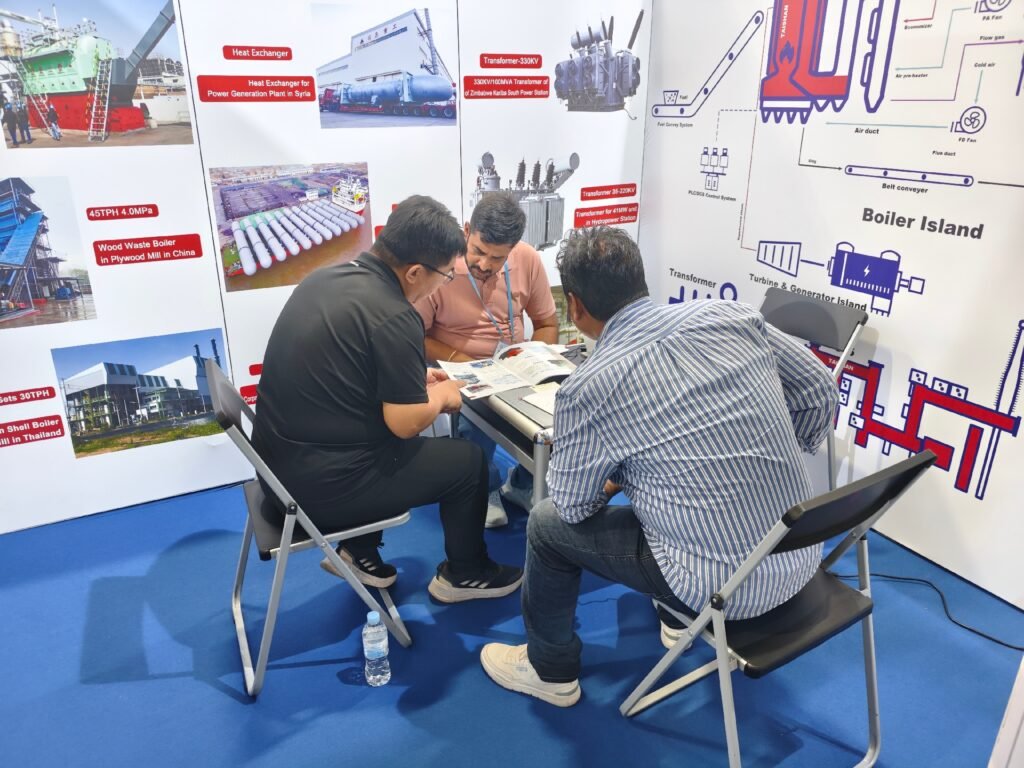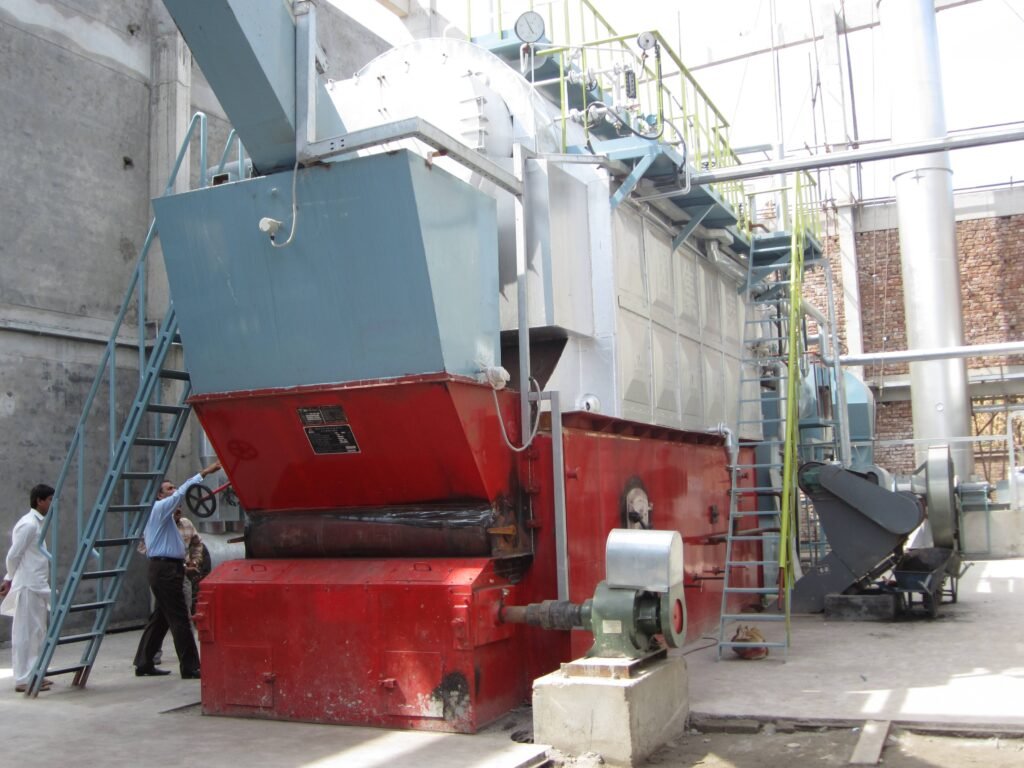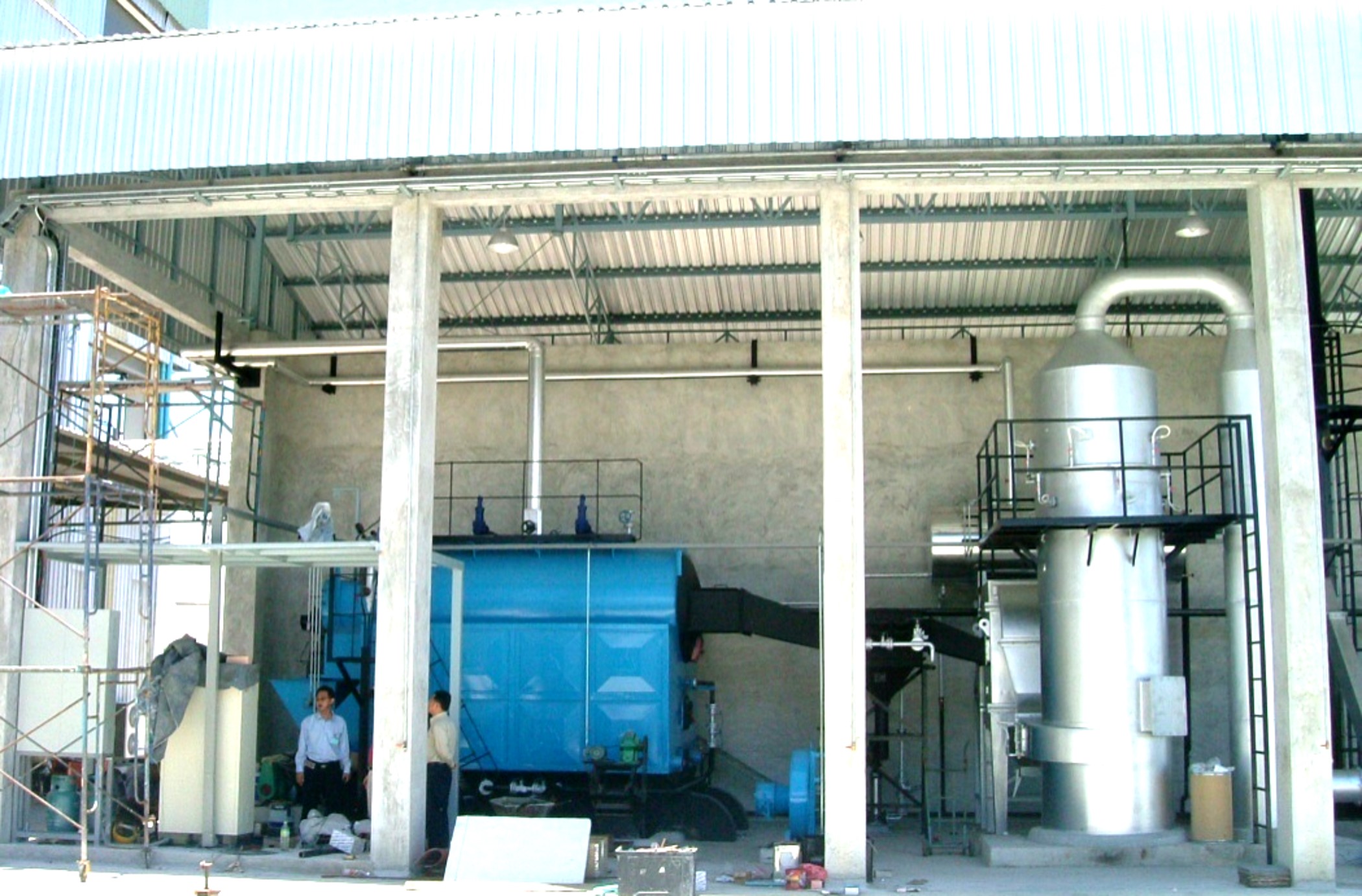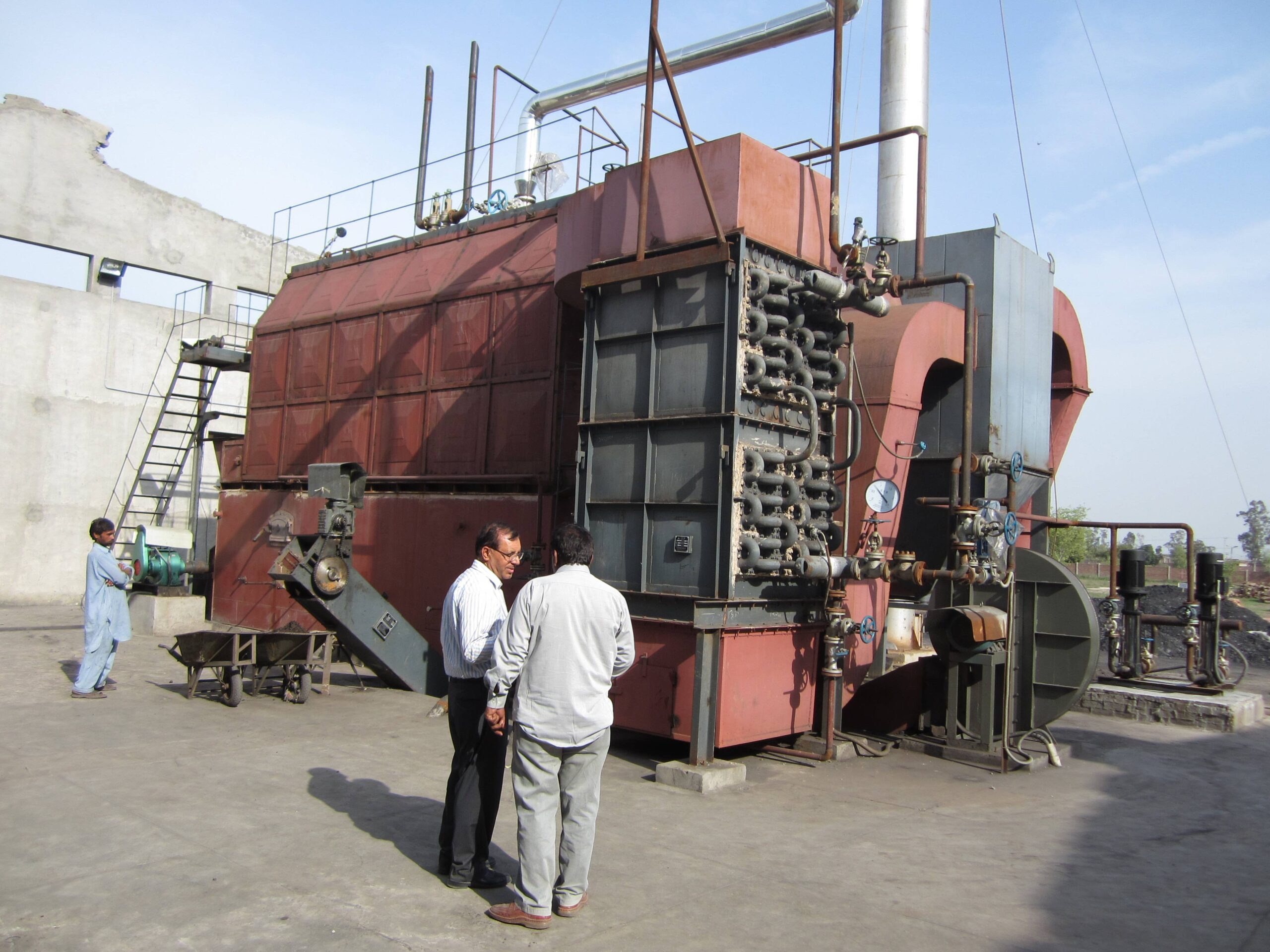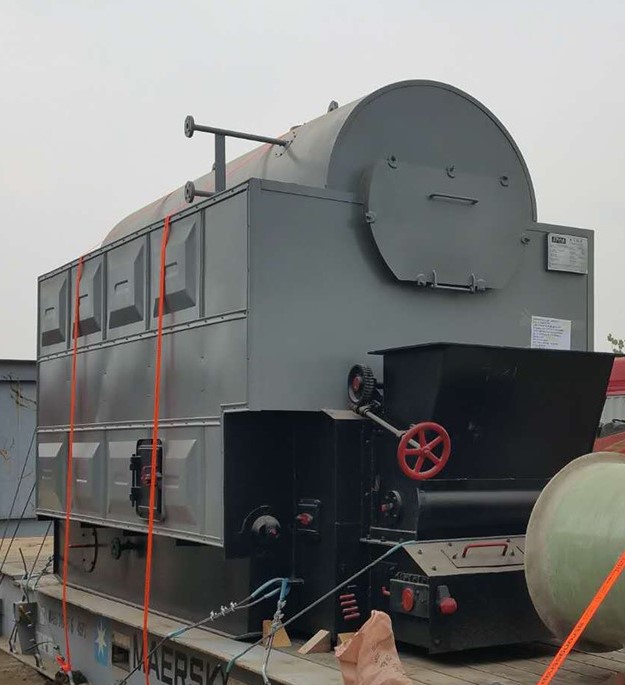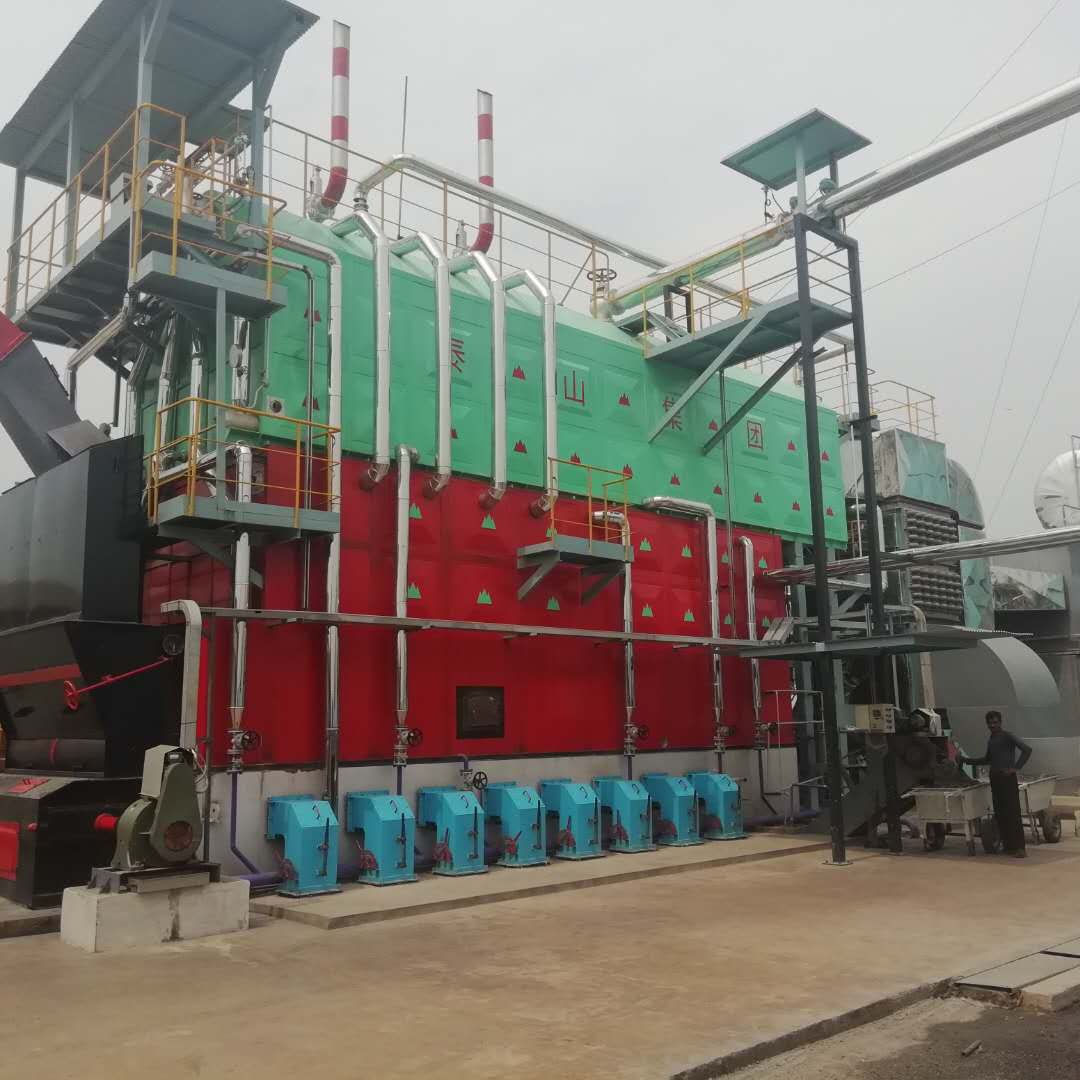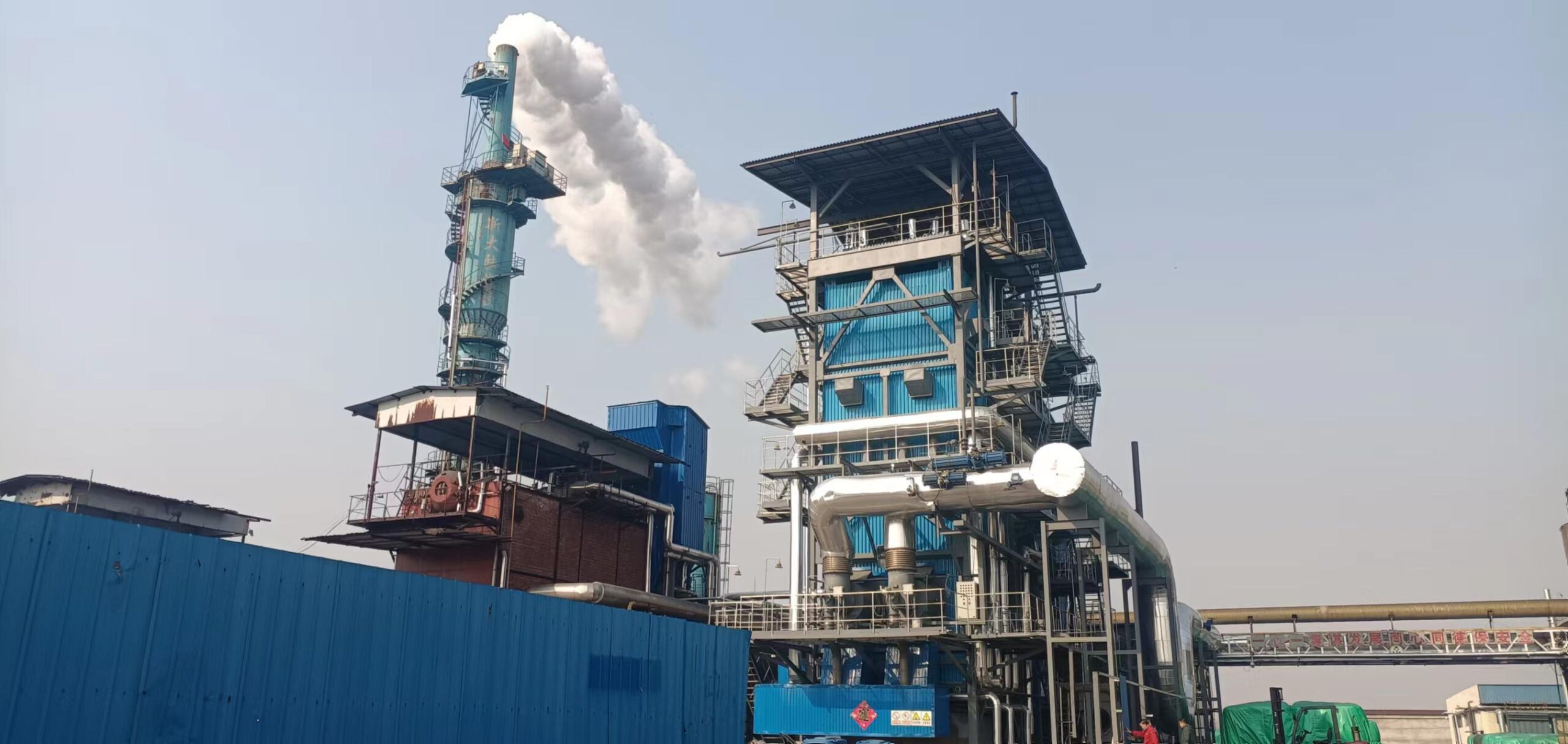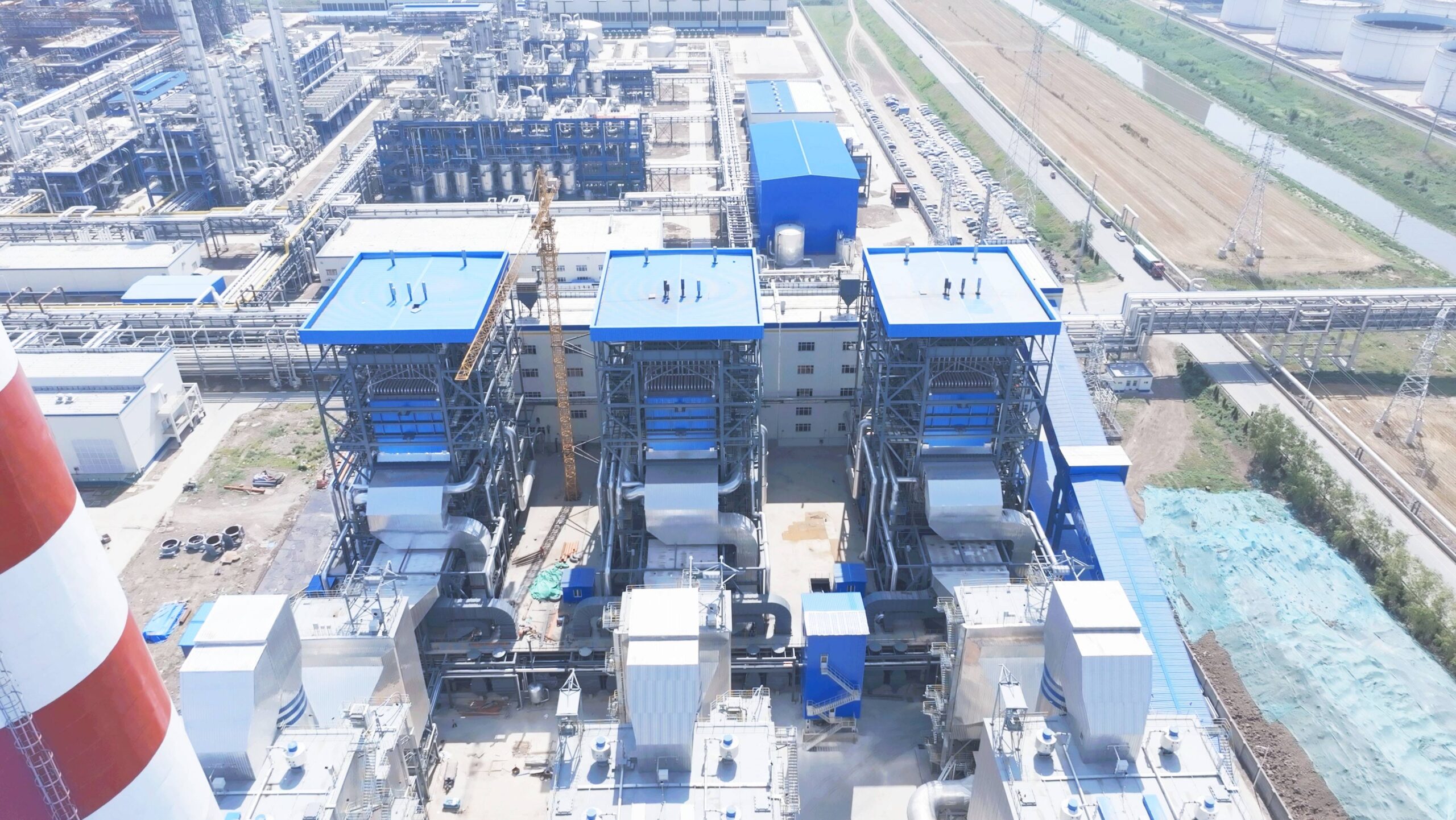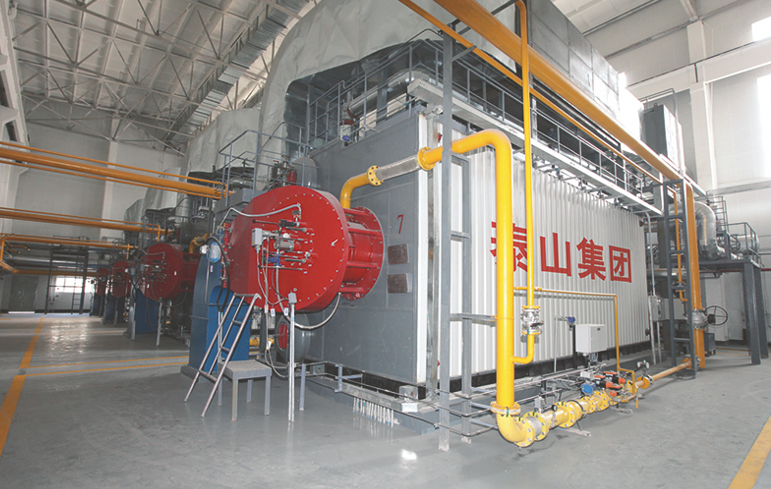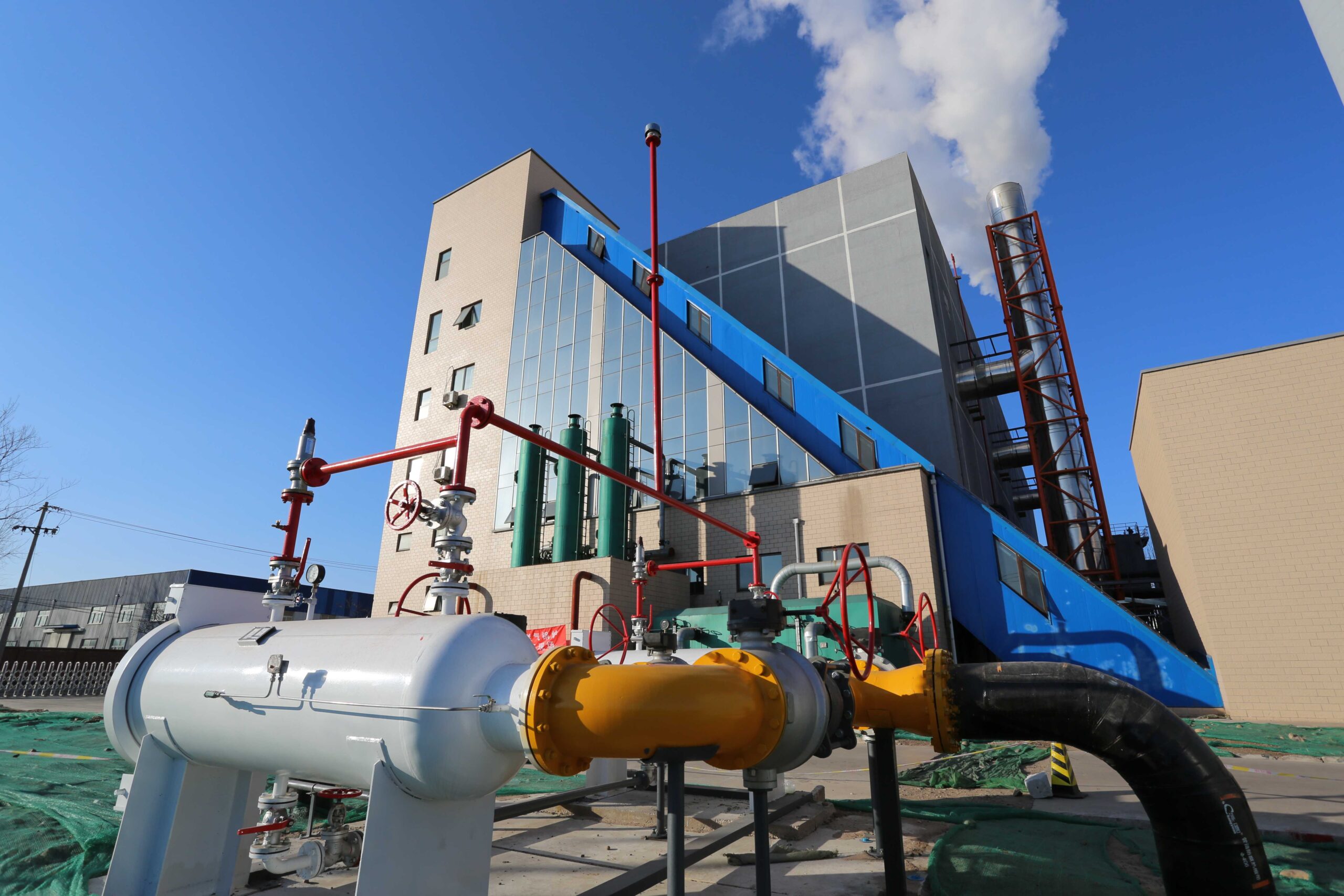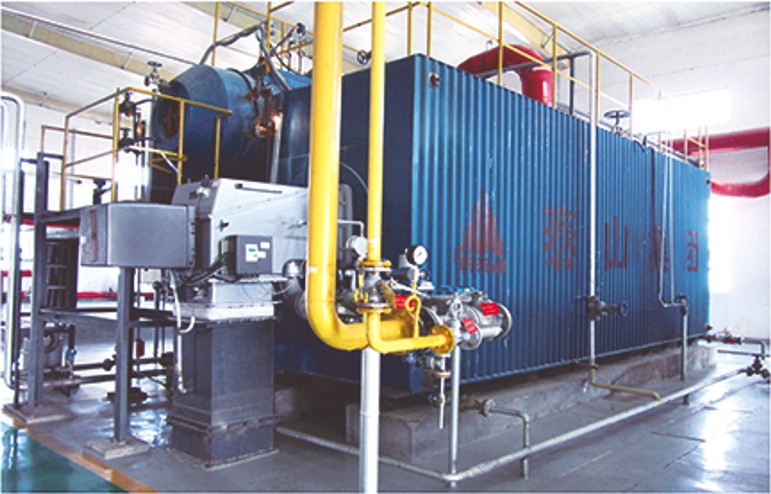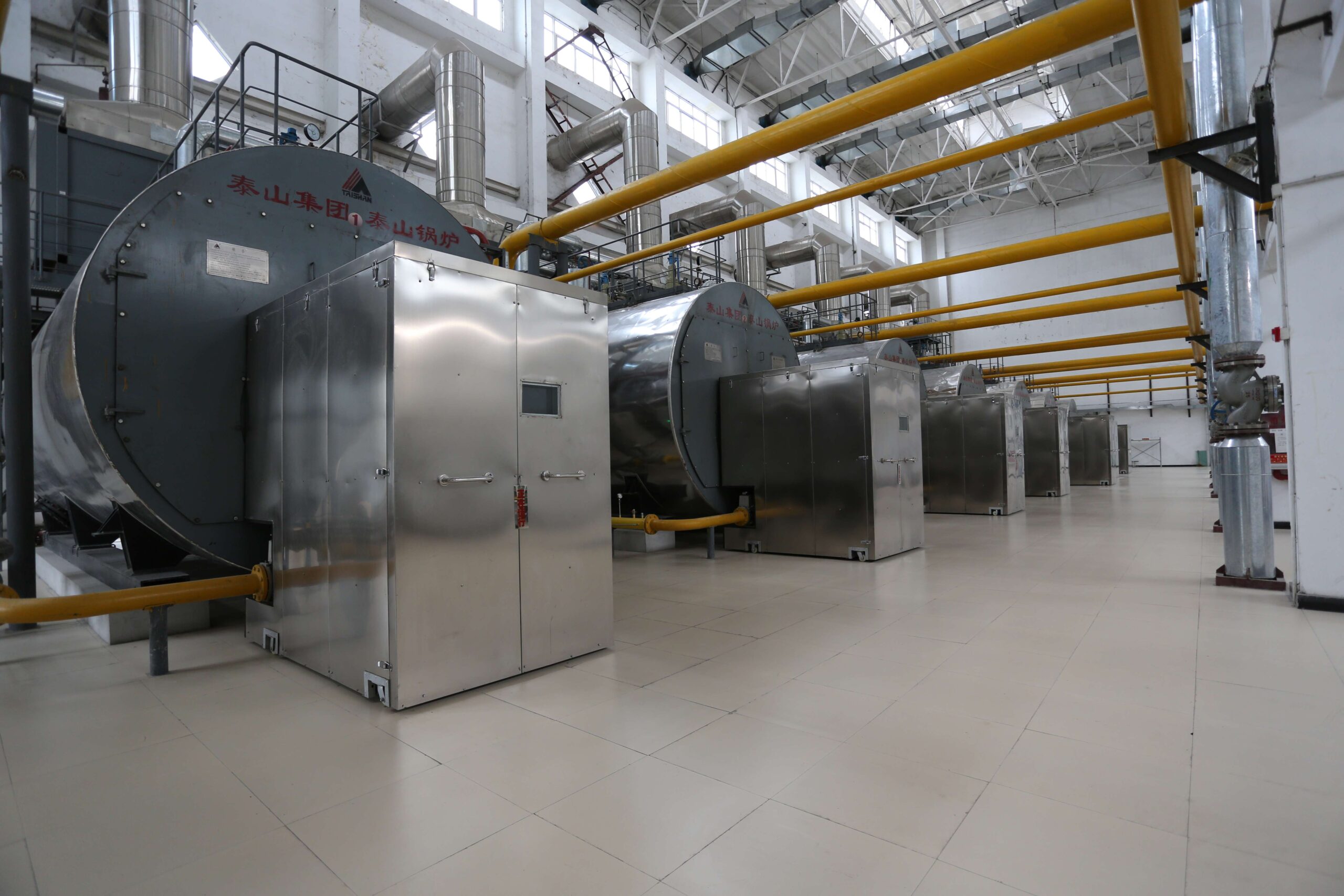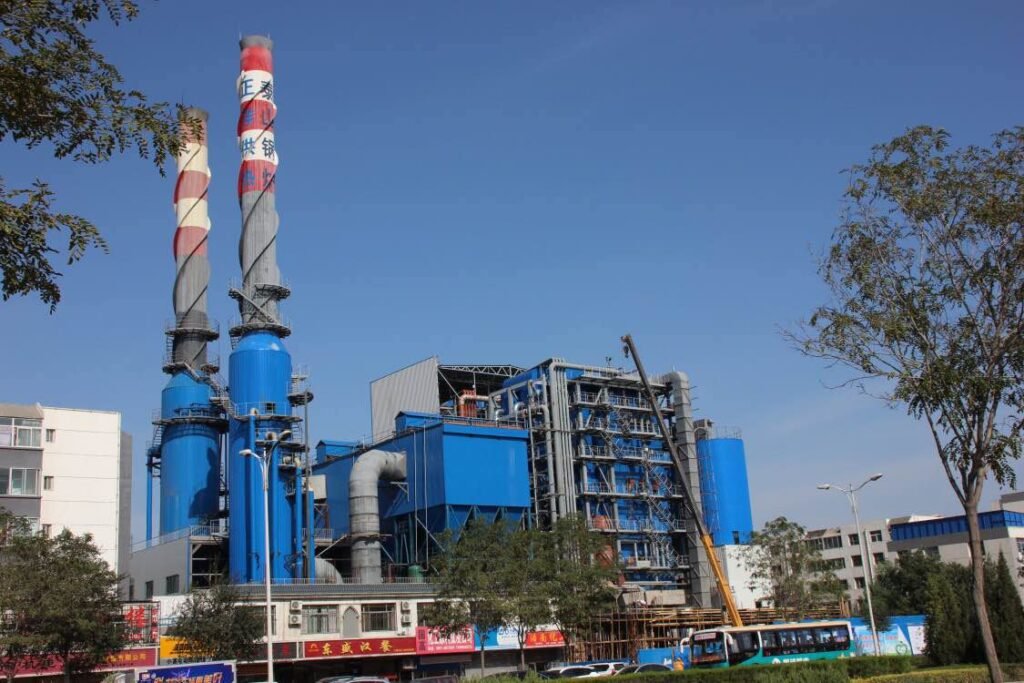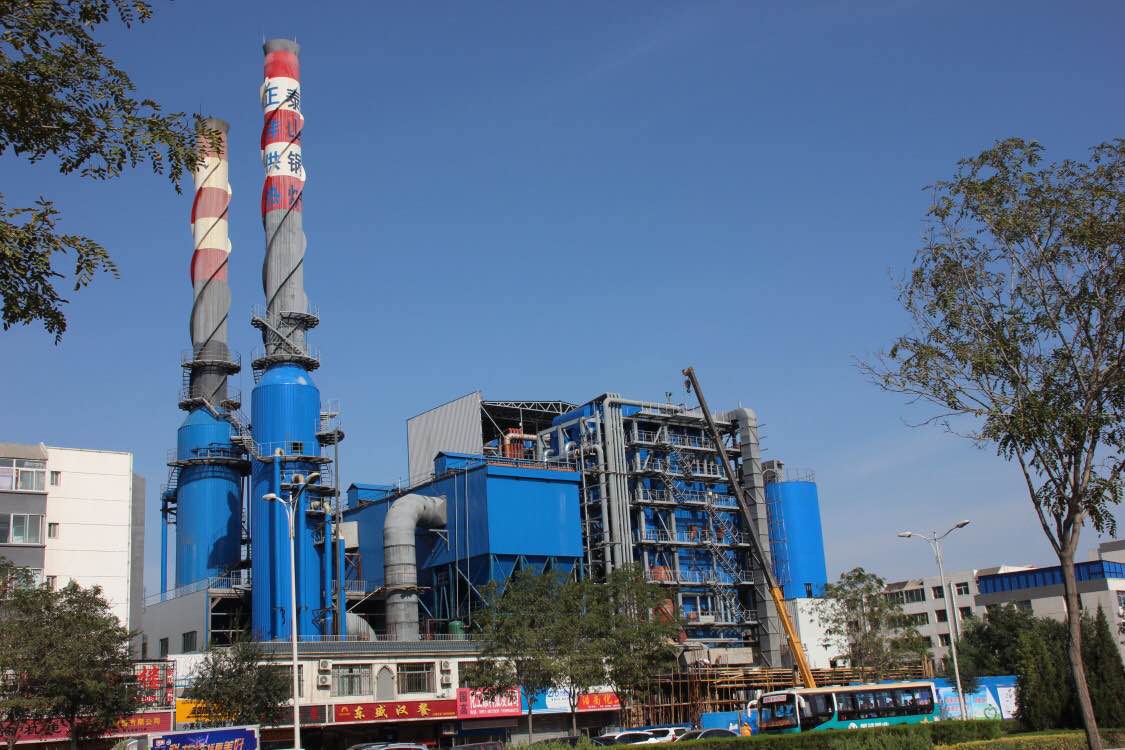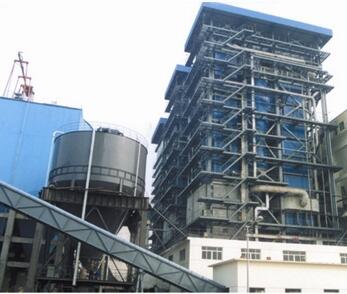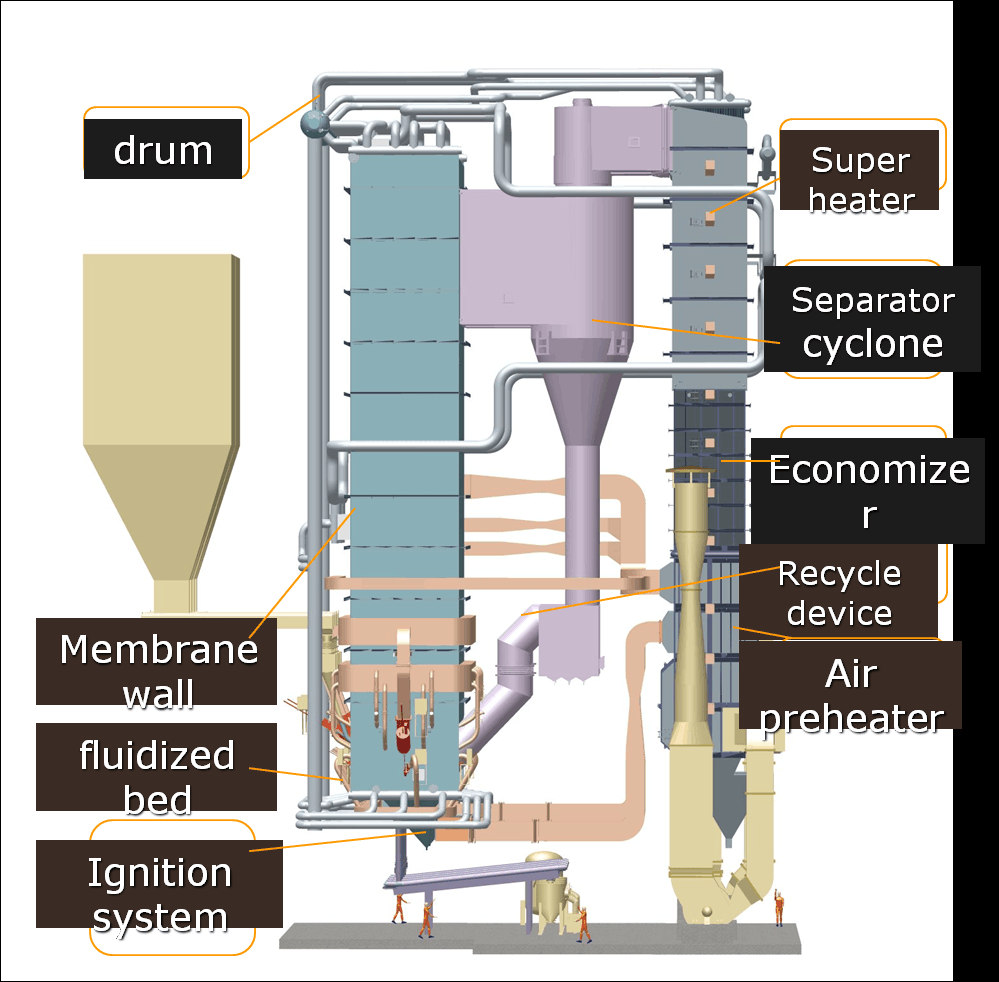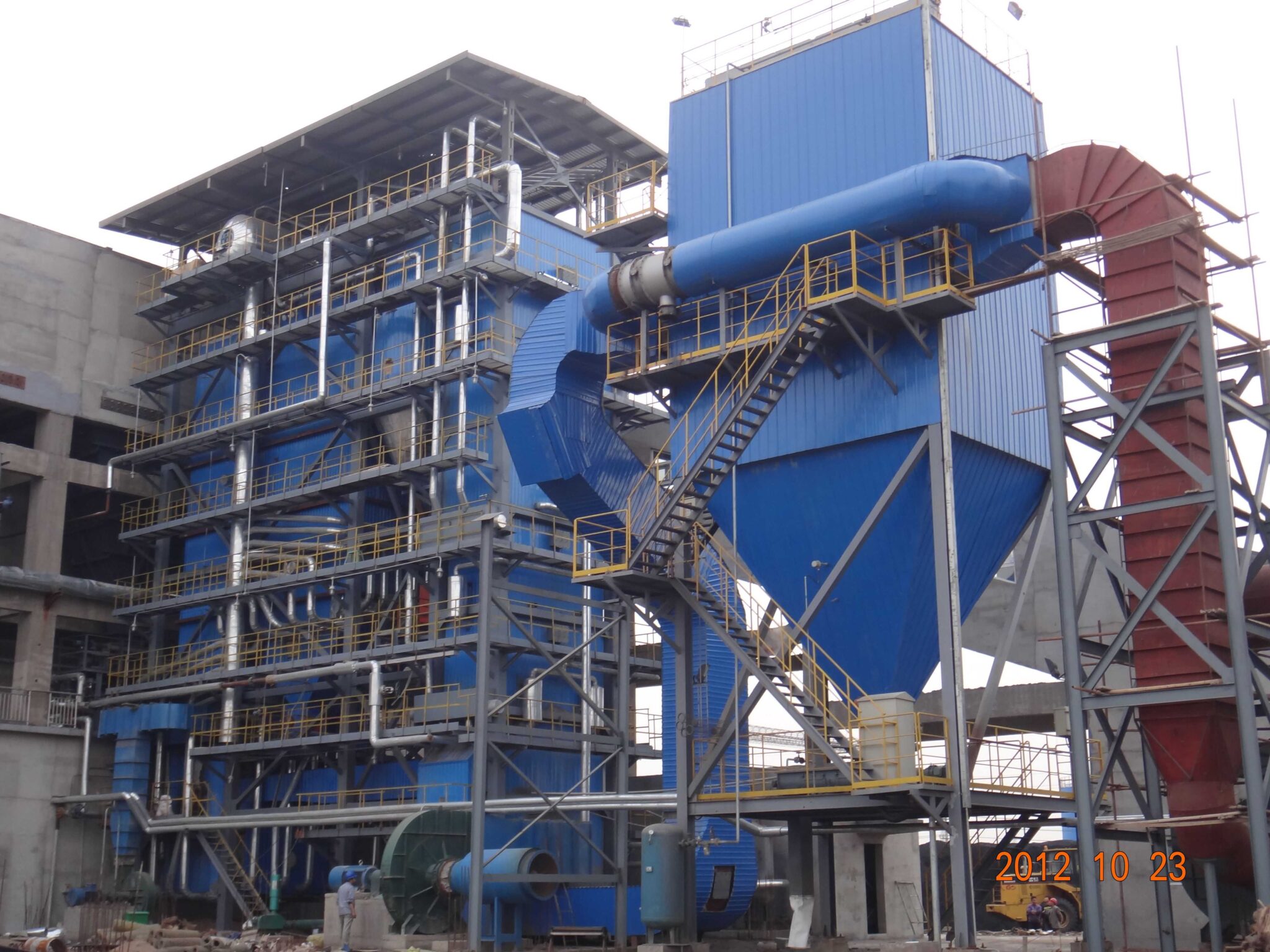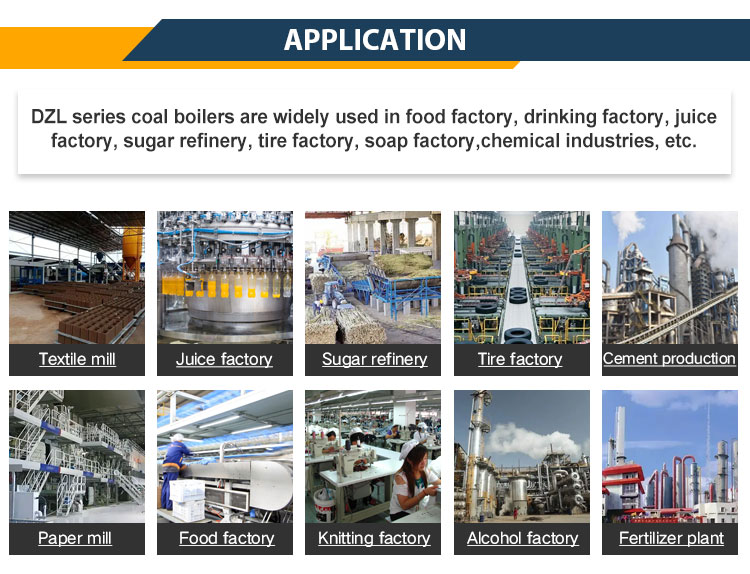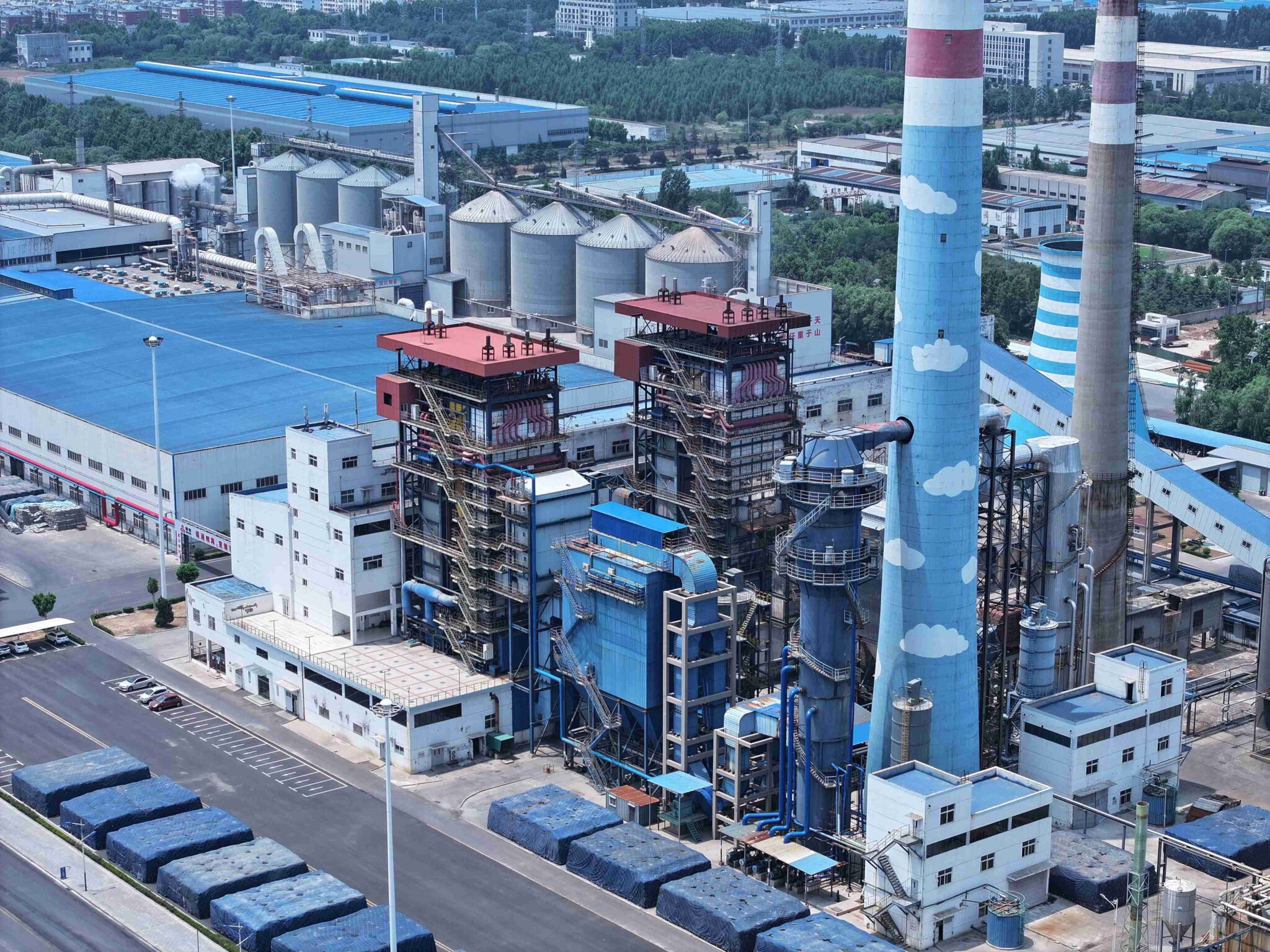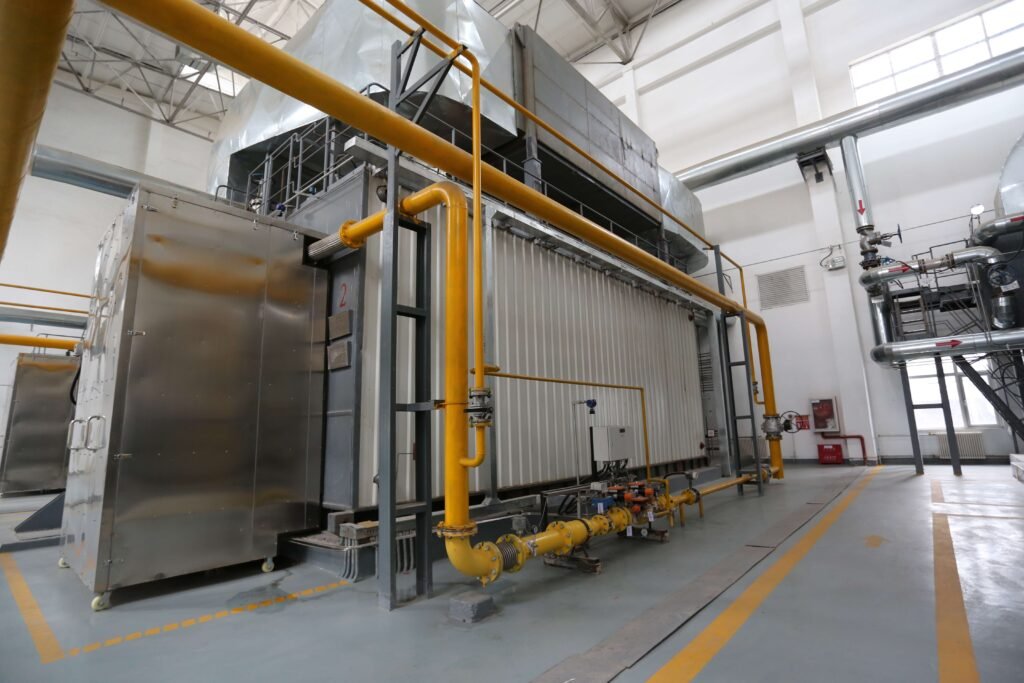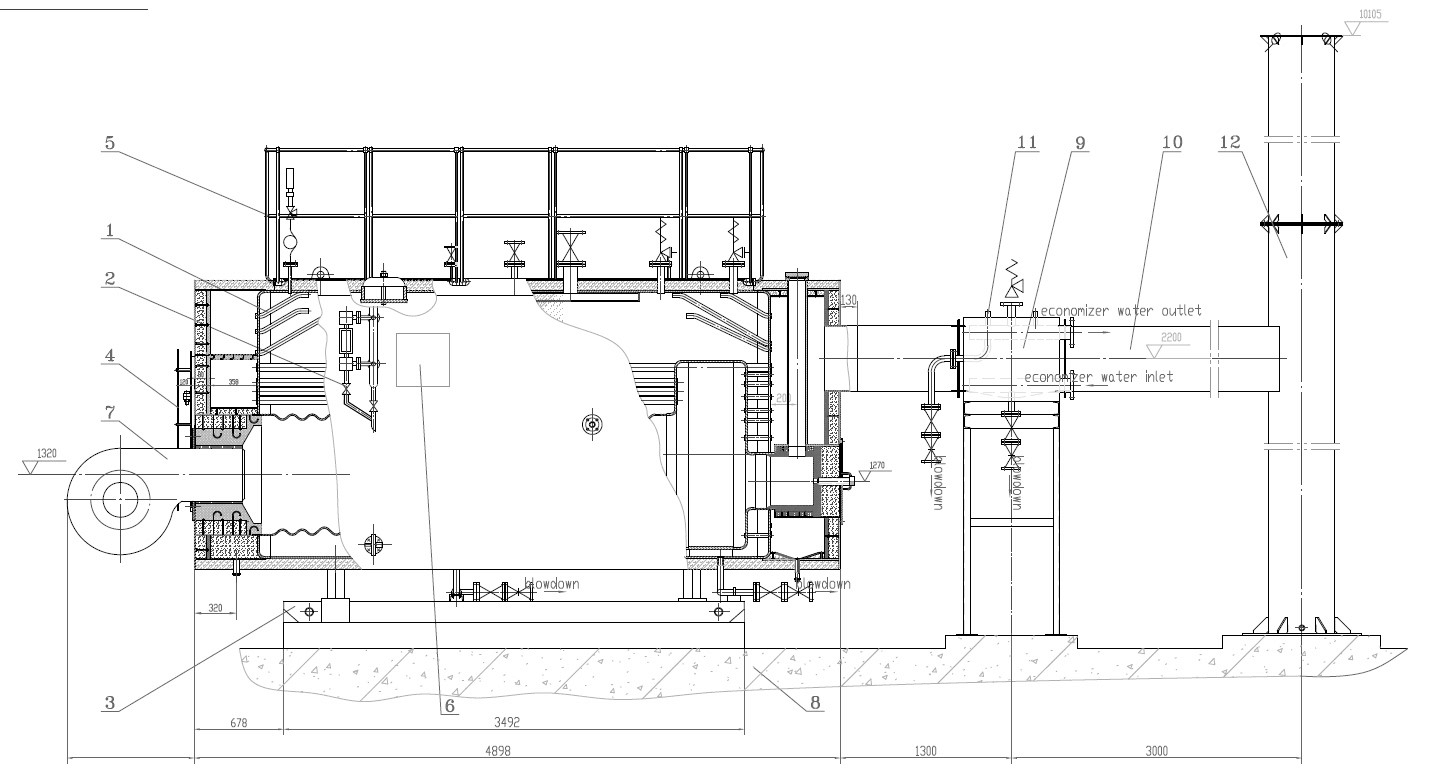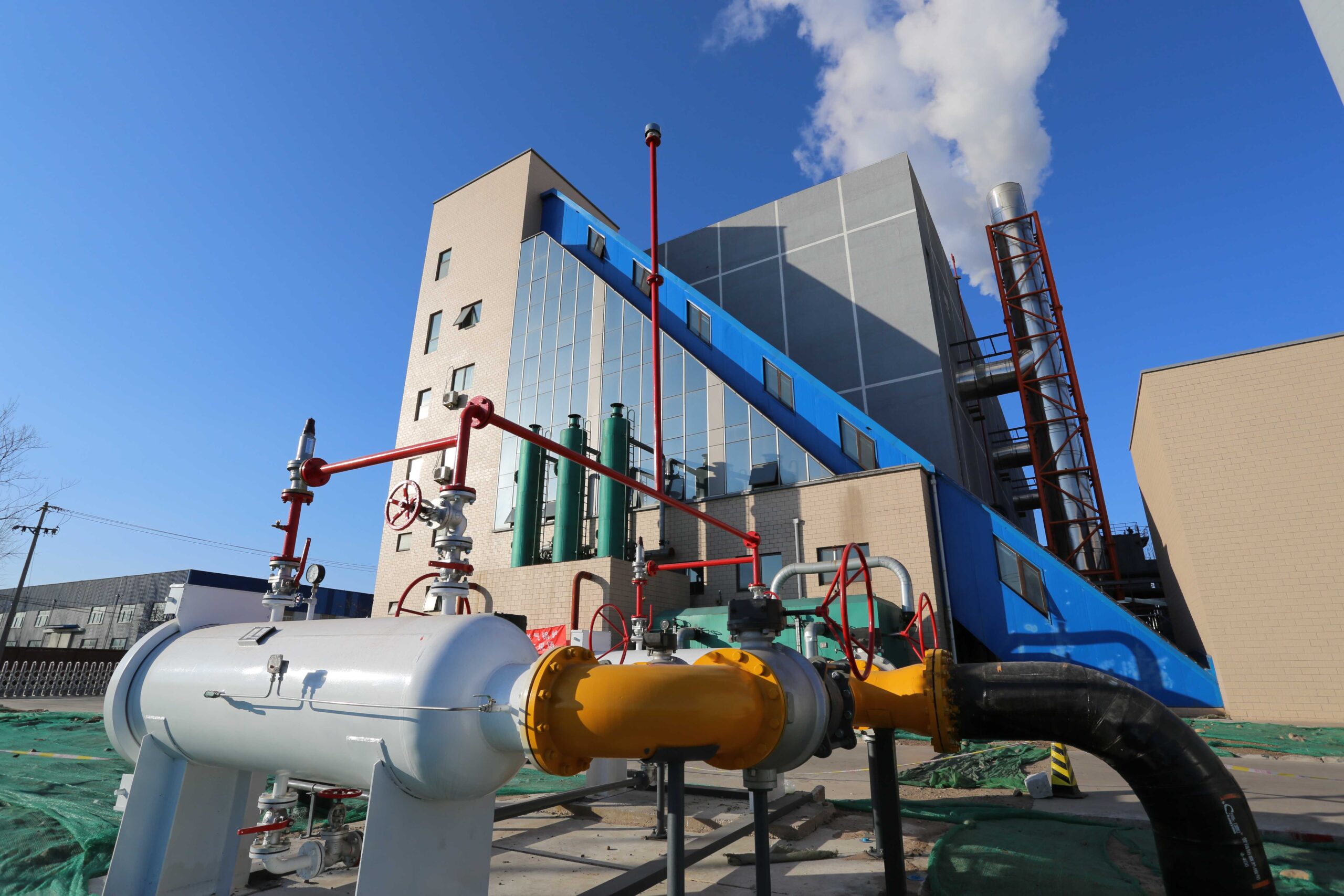Top 5 Key Factors Affecting Industrial Biomass Boiler Efficiency
Top 5 Key Factors Affecting Industrial Biomass Boiler Efficiency
Industrial biomass boilers play a key role in renewable energy generation and sustainable heat production, converting organic fuels like wood chips, pellets, or agricultural residues into steam or hot water. However, if not properly optimized, biomass boilers can suffer from low combustion efficiency, high emissions, and operational instability, reducing both energy and economic performance.
The efficiency of an industrial biomass boiler depends on five key factors: fuel quality and moisture content, combustion air control, heat exchanger cleanliness, insulation and heat loss prevention, and maintenance practices. High-quality, dry biomass improves combustion; accurate air-fuel ratios ensure complete burning; clean heat surfaces optimize heat transfer; good insulation reduces energy loss; and regular maintenance prevents ash buildup and fouling that lower performance.
By managing these five factors, operators can maximize thermal efficiency, fuel utilization, and system reliability, ensuring cleaner and more cost-effective biomass energy production.
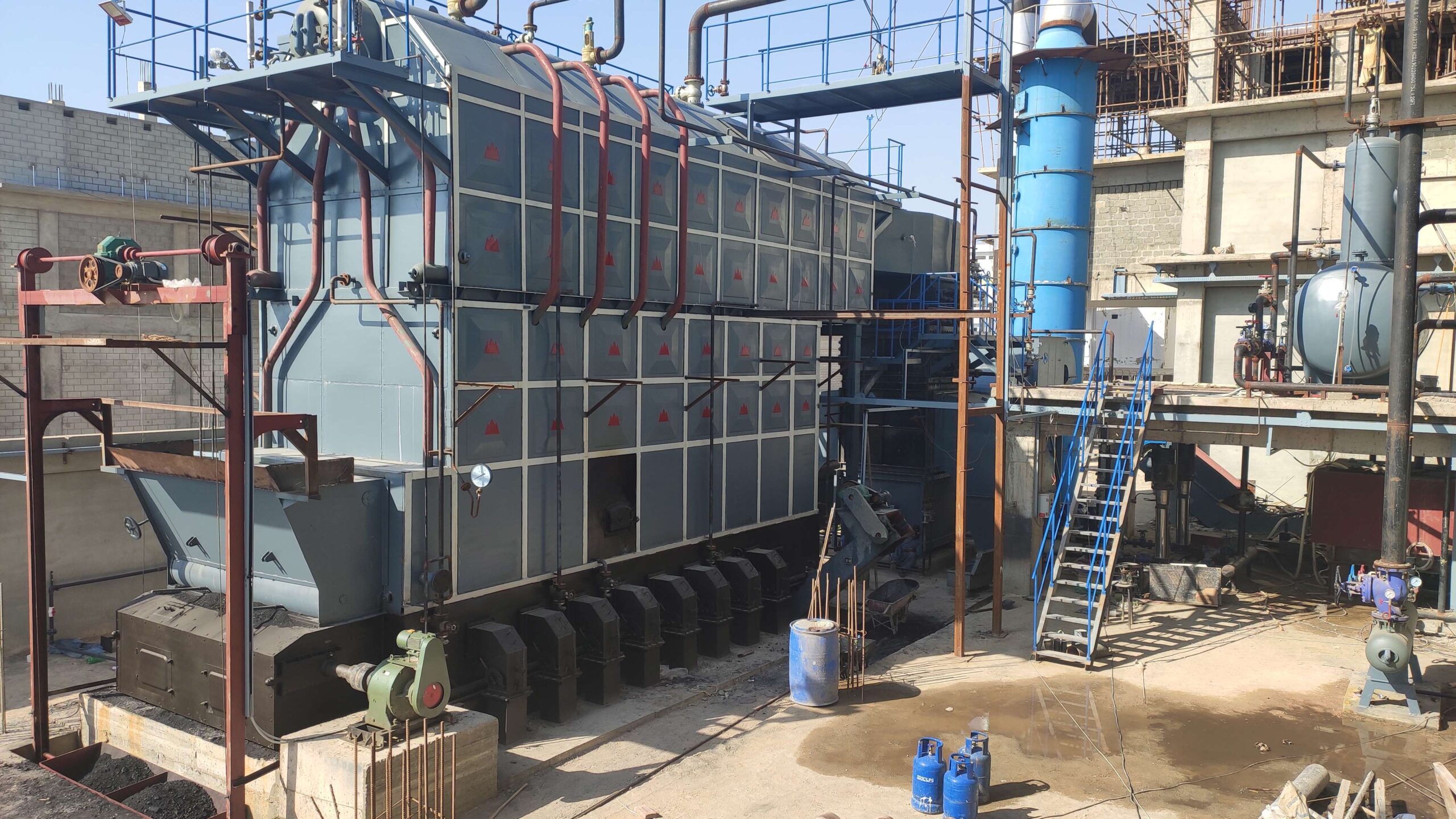
How Does Biomass Fuel Type and Moisture Content Affect Boiler Efficiency?
Biomass boilers are key components of the global transition toward renewable energy. However, not all biomass fuels are created equal—differences in fuel type, moisture content, ash characteristics, and energy density dramatically influence combustion behavior, boiler performance, and operational efficiency. A poorly chosen or improperly prepared biomass feedstock can reduce boiler output, increase maintenance frequency, and elevate emissions. Conversely, selecting the right fuel and maintaining its moisture within an optimal range can significantly enhance system efficiency, reduce fuel costs, and ensure stable, clean combustion. Understanding these factors is essential for achieving consistent and sustainable biomass boiler operation.
The type and moisture content of biomass fuel have a direct and substantial impact on boiler efficiency. Drier, denser fuels such as wood pellets and torrefied biomass achieve higher combustion temperatures and thermal efficiencies (85–90%), while high-moisture fuels like wet wood chips or agricultural residues reduce efficiency (by 10–25%) due to energy loss in evaporating water. Biomass moisture should ideally remain below 20% for efficient combustion. Fuel characteristics—volatile content, ash fusion temperature, and composition—further determine burn stability, heat transfer, and emission profiles. Proper fuel selection and drying are therefore critical to maximizing boiler performance and minimizing operational issues.
Optimizing these fuel parameters helps operators enhance energy yield, lower CO₂ and particulate emissions, and improve the overall sustainability of biomass-based energy systems.
Moisture content in biomass has little effect on boiler efficiency.False
High moisture reduces combustion temperature and requires extra energy to evaporate water, directly lowering efficiency.
Dry biomass fuels such as wood pellets offer higher efficiency and lower emissions compared to wet fuels.True
Low-moisture, high-density fuels enable complete combustion and minimize unburned carbon losses.
1. Understanding Biomass Fuel Diversity
Biomass encompasses a wide range of organic materials—from woody biomass (logs, pellets, chips) to agricultural residues (husks, straw) and energy crops (switchgrass, miscanthus). Each type varies in density, chemical composition, and ash behavior, affecting boiler design and efficiency.
| Biomass Type | Typical Moisture (%) | Calorific Value (MJ/kg, dry basis) | Ash Content (%) | Efficiency Potential (%) |
|---|---|---|---|---|
| Wood Pellets | 6–10 | 18–19 | 0.3–1.0 | 88–92 |
| Wood Chips | 30–50 | 17–18 | 1–2 | 70–80 |
| Sawdust | 20–35 | 16–18 | 0.5–1.5 | 75–85 |
| Bark & Forest Residues | 40–55 | 15–17 | 2–4 | 65–75 |
| Rice Husk | 10–15 | 14–16 | 15–20 | 75–82 |
| Wheat Straw | 12–20 | 14–16 | 4–8 | 78–85 |
| Bagasse (Sugarcane Waste) | 45–55 | 17–18 | 1–2 | 68–78 |
| Torrefied Biomass | 5–8 | 20–22 | <1 | 90–94 |
Densified and pre-dried fuels such as wood pellets or torrefied biomass burn more completely, providing higher flame temperatures and stable operation, while wet and fibrous fuels require more complex combustion management.
2. Moisture Content and Its Thermal Penalty
Moisture in biomass drastically affects energy yield. A large fraction of the fuel’s calorific energy is consumed to evaporate internal water, reducing net efficiency.
Energy Balance Example:
For 1 kg of biomass with 40% moisture:
Energy required to evaporate water ≈ 0.94 MJ/kg
If the dry fuel energy is 18 MJ/kg, the effective energy = 18 × (1–0.40) – 0.94 = 9.86 MJ/kg usable
Efficiency drops 45% compared to dry fuel
| Moisture Content (%) | Effective Heating Value (MJ/kg) | Efficiency Drop vs. Dry Fuel (%) | Approx. Boiler Efficiency (%) |
|---|---|---|---|
| 10 | 16.8 | 0 | 90 |
| 20 | 15.2 | 9 | 85 |
| 30 | 13.5 | 19 | 80 |
| 40 | 11.6 | 31 | 72 |
| 50 | 9.8 | 42 | 65 |
Ideal moisture: below 20% for most biomass boiler systems.
Higher moisture not only wastes energy but also increases soot formation, corrosion, and unburned hydrocarbons.
3. Combustion Temperature and Efficiency Correlation
The moisture level determines achievable flame temperature and combustion stability. Wet biomass yields cooler flames, incomplete combustion, and higher CO and particulate matter emissions.
| Moisture (%) | Flame Temperature (°C) | CO Emissions (mg/Nm³) | Boiler Thermal Efficiency (%) |
|---|---|---|---|
| 10 | 1200 | <200 | 90 |
| 20 | 1050 | 250 | 85 |
| 30 | 950 | 350 | 80 |
| 40 | 850 | 500 | 72 |
| 50 | 750 | >700 | 65 |
Combustion stability directly correlates with temperature. The colder the flame, the higher the risk of incomplete oxidation and deposit formation.
4. Fuel Type and Ash Behavior
Ash composition varies widely among biomass fuels and affects slagging, fouling, and corrosion tendencies. High-alkali or silica-rich residues (from straw or husks) can melt and form deposits on boiler tubes, reducing heat transfer efficiency.
| Fuel Type | Main Ash Components | Ash Fusion Temp (°C) | Fouling Tendency | Maintenance Frequency |
|---|---|---|---|---|
| Wood Pellets | CaO, MgO | 1250–1350 | Low | Low |
| Rice Husk | SiO₂ (>80%) | 950–1050 | Very High | High |
| Straw | K₂O, SiO₂ | 900–1000 | High | High |
| Bagasse | SiO₂, Al₂O₃ | 1100–1200 | Medium | Moderate |
| Energy Crops | K₂O, Cl⁻ | 950–1100 | Medium–High | Moderate |
Mitigation strategies:
Install ash blowers and tube cleaning systems
Use additives (e.g., kaolin, dolomite) to increase ash melting temperature
Blend high-ash fuels with cleaner woody biomass
5. Fuel Preparation and Handling: Key to Consistent Efficiency
Poorly prepared biomass (variable size, inconsistent moisture, contamination) disrupts combustion control. Uniform particle size and consistent moisture allow stable air–fuel mixing and predictable heat output.
| Preparation Factor | Target Range | Operational Benefit |
|---|---|---|
| Particle Size | 10–50 mm (chips) | Even combustion |
| Moisture Content | <20% | Optimal flame stability |
| Ash Content | <3% | Reduced fouling |
| Bulk Density | >500 kg/m³ | Higher feeding efficiency |
| Storage Temperature | <40°C | Prevents degradation |
Drying systems (belt dryers, rotary drum dryers, or waste heat drying) are increasingly integrated into biomass plants to ensure fuel readiness, particularly in humid climates.
6. Boiler Design Adaptations by Fuel Type
Different fuels require tailored boiler and combustion designs to achieve optimal performance.
| Fuel Category | Recommended Combustion System | Key Design Features | Efficiency Range (%) |
|---|---|---|---|
| Pellets | Underfeed or moving grate | Controlled air distribution, automatic feed | 88–92 |
| Wood Chips | Step grate or fluidized bed | Robust for high-moisture fuels | 75–85 |
| Agricultural Waste | Bubbling fluidized bed (BFB) | Handles high ash and low fusion points | 78–86 |
| Bagasse | Pinhole or spreader stoker | Optimized for fibrous fuels | 70–80 |
| Torrefied Biomass | Pulverized firing | Behaves like coal, higher heat release | 90–94 |
Fluidized bed technologies are particularly valuable for fuel flexibility, allowing the use of mixed biomass streams while maintaining efficiency.
7. Impact on Emissions and Sustainability
High-moisture or poorly combusted fuels lead to higher CO, volatile organic compounds (VOCs), and particulate matter (PM) emissions. Drier fuels minimize unburned carbon and stabilize combustion temperature, resulting in cleaner flue gases.
| Parameter | Dry Pellets | Wet Chips (40%) | Bagasse | Straw |
|---|---|---|---|---|
| CO₂ (kg/MWh) | 340 | 390 | 360 | 370 |
| CO (mg/Nm³) | 150 | 400 | 250 | 350 |
| NOₓ (mg/Nm³) | 180 | 210 | 190 | 200 |
| PM (mg/Nm³) | 50 | 130 | 100 | 120 |
Maintaining moisture control thus plays a dual role: improving efficiency and reducing emissions.
8. Economic Impact of Fuel Moisture on Energy Cost
Every 10% increase in moisture content can raise fuel consumption by 8–12% to maintain the same steam output. For large-scale plants, this can translate into substantial annual costs.
| Moisture (%) | Fuel Required (tons/year for 10 MW) | Additional Cost (USD/year) | Efficiency (%) |
|---|---|---|---|
| 10 | 45,000 | — | 90 |
| 20 | 48,600 | +$80,000 | 85 |
| 30 | 52,800 | +$170,000 | 80 |
| 40 | 58,000 | +$290,000 | 72 |
Fuel drying—though energy-intensive initially—offers strong economic returns by improving calorific yield and reducing transportation and storage volume.
9. Case Study: Fuel Moisture Optimization in a 15 MW Biomass Plant
A biomass cogeneration facility in Northern Europe operated on wood chips with 40% moisture, achieving only 78% boiler efficiency. After installing a low-temperature belt dryer using waste flue gas:
Fuel moisture dropped from 40% → 18%
Efficiency increased from 78% → 89%
Annual fuel use reduced by 12%
CO emissions cut by 45%
Payback period: 2.6 years
This case underscores how moisture control alone can transform plant performance and sustainability outcomes.
Conclusion
Biomass boiler efficiency is fundamentally determined by fuel type and moisture content. Dry, homogeneous fuels like wood pellets and torrefied biomass deliver superior efficiency and cleaner combustion, while wet or high-ash fuels require specialized handling and design. Maintaining moisture below 20%, ensuring fuel uniformity, and adopting modern combustion and drying technologies are essential to maximizing efficiency, reducing emissions, and ensuring stable operation. Sustainable biomass energy depends as much on fuel preparation as on boiler design.
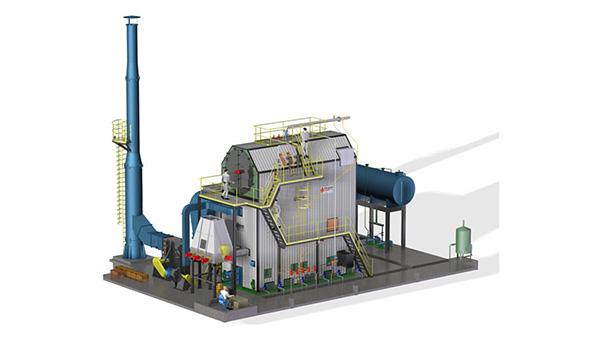
Why Is Proper Combustion Air Control Essential for Efficient Operation?
Efficient boiler performance depends on achieving the perfect balance between fuel and air. Too little air leads to incomplete combustion, forming soot, carbon monoxide (CO), and unburned hydrocarbons. Too much air, on the other hand, cools the flame and carries valuable heat out through the flue gas, wasting fuel. Both extremes lead to lower efficiency, higher emissions, and potential damage to the equipment. Proper combustion air control—maintaining the right air-to-fuel ratio in real time—is therefore fundamental for maximizing energy conversion, ensuring safety, and reducing operational costs.
Proper combustion air control is essential for efficient boiler operation because it ensures complete fuel combustion while minimizing excess air losses. Maintaining an optimal air-to-fuel ratio (typically 10–20% excess air for gas, 20–30% for oil, and 30–50% for biomass) allows maximum heat release at the correct flame temperature. Too little air causes incomplete combustion and CO formation, while too much air increases flue gas losses. Advanced O₂ trim systems, variable-speed fans, and real-time flue gas monitoring enable stable, efficient, and low-emission operation across varying loads.
In short, precise combustion air control is not just an operational parameter—it is the foundation of efficient, clean, and reliable boiler performance.
Increasing combustion air always improves boiler efficiency.False
Excess air beyond the optimal range cools the flame and increases flue gas losses, reducing efficiency.
Proper air-to-fuel ratio control ensures complete combustion and minimal emissions.True
Accurate control optimizes flame temperature and fuel utilization while minimizing CO and unburned hydrocarbons.
1. The Science of Combustion Air: Stoichiometry and Real-World Adjustment
Combustion air provides the oxygen needed for fuel oxidation. The theoretical minimum amount of air is called the stoichiometric air—the precise quantity required to completely burn the fuel. However, in practice, extra air is needed to ensure complete mixing and oxidation.
| Fuel Type | Theoretical Air Requirement (kg air/kg fuel) | Typical Excess Air (%) | Real Air-to-Fuel Ratio (kg/kg) |
|---|---|---|---|
| Natural Gas (CH₄) | 17.2 | 10–15 | 18.9–19.8 |
| Light Fuel Oil | 14.5 | 15–25 | 16.7–18.1 |
| Heavy Fuel Oil | 13.8 | 20–30 | 16.5–17.9 |
| Biomass (Wood) | 6.5–7.0 | 30–50 | 8.5–10.5 |
| Coal | 8.0–9.0 | 30–40 | 10.4–12.6 |
The right excess air ensures full oxidation while minimizing energy lost in heating unnecessary air mass. Precise control around this narrow optimal range determines combustion quality and efficiency.
2. Effect of Air Control on Efficiency and Heat Loss
Each percentage of excess air above the optimum directly translates into lost efficiency due to higher flue gas mass flow and lower flue gas temperature recovery.
| Excess Air (%) | Flue Gas O₂ (%) | Stack Temperature (°C) | Efficiency (%) | Relative Fuel Loss (%) |
|---|---|---|---|---|
| 5 | 0.8 | 160 | 91.5 | 0 |
| 10 | 1.3 | 170 | 91.0 | 0.5 |
| 20 | 2.4 | 190 | 89.5 | 2.2 |
| 40 | 4.5 | 215 | 87.0 | 4.5 |
| 60 | 6.2 | 235 | 85.0 | 7.0 |
An increase from 15% to 40% excess air can reduce boiler efficiency by 3–5%—a significant penalty for medium or large-scale systems. Proper air control ensures that flue gases leave the boiler at optimal oxygen concentration, minimizing thermal losses.
3. Consequences of Improper Air Supply
Improper air management can cause several performance and safety issues:
| Air Condition | Common Causes | Consequence | Efficiency Impact |
|---|---|---|---|
| Too Little Air | Poor burner tuning, fouled nozzles, fuel surges | Incomplete combustion, soot, CO, unburned hydrocarbons | ↓ Efficiency (–5–10%) |
| Too Much Air | Oversized fans, manual controls, miscalibration | Lower flame temperature, higher stack loss | ↓ Efficiency (–3–7%) |
| Fluctuating Air | Variable load, pressure swings | Unstable flame, increased NOₓ | Reduced performance stability |
| Non-Uniform Air Distribution | Faulty registers, uneven mixing | Hot spots and unburned zones | Increased maintenance |
The goal is stable, balanced combustion—the hallmark of modern boiler control systems.
4. O₂ Trim and Advanced Combustion Control Systems
Modern combustion systems use O₂ trim control to automatically adjust the air–fuel ratio based on continuous feedback from flue gas analyzers. This technology ensures precise oxygen control even as fuel quality or load fluctuates.
| Control Technology | Function | Typical Efficiency Gain (%) | Emission Benefit |
|---|---|---|---|
| O₂ Trim System | Adjusts combustion air in real time | 1–3 | Reduces CO and unburned fuel |
| VFD (Variable Frequency Drive) | Modulates fan speed to match demand | 1–2 | Lower power use |
| Flue Gas Analyzer (O₂/CO) | Monitors combustion gases | — | Enables optimization |
| SCADA Integration | Supervises full boiler operation | — | Continuous performance tracking |
Combined, these technologies maintain boiler efficiency in the 88–92% range, minimizing unburned losses and ensuring environmental compliance.
5. Combustion Air Temperature and Its Influence
Preheating combustion air improves efficiency by reducing fuel required to achieve ignition temperature. Economizers or air preheaters reclaim flue gas heat for this purpose.
| Air Temperature (°C) | Boiler Efficiency (%) | Fuel Savings (%) | Typical Application |
|---|---|---|---|
| Ambient (25) | 88 | — | Basic systems |
| 100 | 89.5 | 1.5 | Small boilers |
| 150 | 91.0 | 3.0 | Medium industrial |
| 200 | 92.0 | 4.5 | High-performance units |
Each 20°C increase in air preheat can improve overall efficiency by approximately 0.4–0.6%, contributing both energy and emissions savings.
6. Flue Gas Analysis: Verifying Air Control Accuracy
Proper air control is validated through flue gas measurement. Oxygen (O₂), carbon monoxide (CO), and carbon dioxide (CO₂) readings reflect combustion efficiency.
| Parameter | Ideal Range | Diagnostic Meaning |
|---|---|---|
| O₂ | 2–4% (gas), 3–6% (oil) | Indicates proper excess air |
| CO₂ | 9–11% (gas), 11–13% (oil) | High values = efficient combustion |
| CO | <100 ppm | Low = complete combustion |
| Flue Gas Temp. | 150–200°C | Confirms heat recovery effectiveness |
Regular monitoring ensures the system maintains target values under varying loads.
7. Impact on Emissions and Environmental Compliance
Air control not only affects efficiency—it governs pollutant formation. Both CO and NOₓ emissions are sensitive to air–fuel balance.
| Condition | CO Emission (mg/Nm³) | NOₓ Emission (mg/Nm³) | Comment |
|---|---|---|---|
| Optimal Air | 100–200 | 200–250 | Stable, efficient combustion |
| Low Air | >600 | <150 | Incomplete combustion, soot |
| High Air | <100 | >350 | Over-oxidation, NOₓ increase |
| Variable Air | >300 | 250–400 | Instability and fluctuating heat |
Maintaining optimal excess air minimizes both CO and NOₓ, helping meet EU, U.S. EPA, and ISO 14001 emission standards.
8. Economic Impact of Poor Air Control
Even small inefficiencies can add up to significant fuel losses over time.
| Excess Air (%) | Annual Fuel Loss (10 TPH Boiler, Natural Gas) | Added Cost (USD/year)* |
|---|---|---|
| 10 | — | — |
| 20 | 1.5% | $12,000 |
| 30 | 3.0% | $25,000 |
| 40 | 4.5% | $38,000 |
*Assuming $8/MMBtu fuel cost and 8,000 hours/year operation.
An O₂ trim system typically pays for itself within 1–2 years through fuel savings alone.
9. Case Study: Air Control Optimization in a 25 TPH Oil-Fired Boiler
A chemical processing facility struggled with unstable combustion and high fuel costs. After upgrading to an O₂ trim system and VFD-driven fans:
Excess air reduced from 35% → 18%
Efficiency increased from 86% → 91%
CO emissions fell from 450 mg/Nm³ → 120 mg/Nm³
Annual fuel savings exceeded $65,000
Payback: 1.8 years
This demonstrates that intelligent air management delivers measurable energy, environmental, and economic benefits.
Conclusion
Proper combustion air control lies at the core of efficient boiler operation. By maintaining the ideal air–fuel balance, operators ensure complete combustion, maximum thermal output, and minimal emissions. Whether through manual tuning or automated O₂ trim systems, precise air regulation reduces waste, stabilizes performance, and extends equipment life. Efficient boilers are not simply well-built—they are well-controlled.
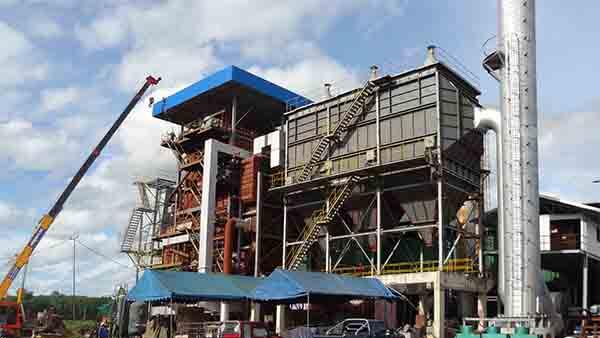
How Do Fouling and Heat Exchanger Cleanliness Influence Performance?
In every industrial boiler or power generation system, heat exchangers—such as economizers, superheaters, and air preheaters—serve as the vital components for transferring energy efficiently. However, over time, deposits of soot, ash, or mineral scale gradually form on heat transfer surfaces. This phenomenon, known as fouling, acts as an insulating barrier that blocks efficient heat flow. As fouling increases, the system requires more fuel to maintain output, flue gas temperatures rise, and both emissions and maintenance costs soar. Maintaining heat exchanger cleanliness is therefore one of the most important factors for preserving boiler efficiency, reliability, and longevity.
Fouling and heat exchanger cleanliness directly affect boiler performance by determining how efficiently heat is transferred from hot flue gases to water or steam. Even a thin layer of soot or scale can lower heat transfer efficiency by 5–10%, increase flue gas temperature by 20–40°C, and raise fuel consumption by 2–4%. Keeping surfaces clean maintains design heat exchange rates, prevents tube overheating, reduces corrosion, and ensures consistent fuel economy. Regular soot blowing, descaling, and water treatment are essential practices for maintaining efficiency and reducing downtime.
Simply put, a clean boiler is an efficient boiler—and understanding fouling’s impact is key to sustainable, cost-effective operation.
Fouling does not significantly affect boiler efficiency.False
Even small layers of soot or scale act as insulation, cutting heat transfer and increasing fuel usage.
Maintaining clean heat exchanger surfaces improves performance and reduces energy losses.True
Clean surfaces enhance heat flow, stabilize temperatures, and lower fuel consumption.
1. Understanding Heat Transfer and the Effect of Fouling
In a boiler, heat flows from hot flue gas through metal tube walls into water or steam. When the surface is clean, heat moves quickly and efficiently. However, fouling adds an extra thermal barrier, slowing this transfer.
Think of the total heat transfer as depending on three parts:
The ability of hot gases to give up heat.
The resistance of the metal wall and any deposits on it.
The ability of water or steam to absorb that heat.
As fouling builds up, this resistance increases, forcing the boiler to burn more fuel for the same steam output.
| Fouling Thickness (mm) | Reduction in Heat Transfer (%) | Increase in Fuel Use (%) | Efficiency Loss (%) |
|---|---|---|---|
| 0 (Clean Surface) | 0 | 0 | 0 |
| 0.5 | 2–3 | 1–2 | 1–2 |
| 1.0 | 5–7 | 2–4 | 3–4 |
| 2.0 | 10–12 | 5–7 | 6–8 |
| 3.0 | 15+ | 8–10 | 9–12 |
Even a one-millimeter deposit can lower boiler efficiency by more than 3%. Over a year, this translates to thousands of dollars in wasted fuel.
2. Common Types and Sources of Fouling
Different fuels and operating conditions create various kinds of fouling, each affecting different parts of the boiler system.
| Fouling Type | Primary Source | Affected Area | Major Impact |
|---|---|---|---|
| Soot Fouling | Incomplete fuel combustion | Gas-side tubes (economizer, air preheater) | Heat blockage, higher stack temperature |
| Ash Deposits | Solid fuel (coal, biomass) | Superheater, economizer | Tube plugging, corrosion |
| Scale Formation | Hard water minerals (Ca, Mg) | Water-side tubes | Reduced heat transfer, tube overheating |
| Biofouling | Microbial activity in condensate lines | Cooling systems, feedwater | Flow obstruction, corrosion |
| Corrosion Fouling | Acidic flue gas condensation | Cold-end heat exchangers | Metal loss, leakage risk |
Understanding the fouling type helps select the right cleaning strategy and maintenance frequency.
3. Performance Degradation Due to Fouling
As deposits build, flue gas must leave at a higher temperature because less heat is transferred to the steam. This is a direct efficiency loss.
| Performance Indicator | Clean Boiler | Fouled Boiler | Change |
|---|---|---|---|
| Flue Gas Temperature (°C) | 160 | 200 | +25% |
| Steam Temperature (°C) | 450 | 430 | –4% |
| Boiler Efficiency (%) | 90.5 | 87.0 | –3.5% |
| Fuel Consumption (kg/h) | 1,000 | 1,050 | +5% |
| CO Emission (mg/Nm³) | 200 | 350 | +75% |
When flue gas temperature rises while steam output remains constant, it’s a clear sign of fouling buildup.
4. Economic Consequences of Fouling
Energy losses caused by fouling have a direct financial impact. The larger the boiler, the greater the cost of even small efficiency drops.
| Boiler Capacity (ton/hr) | Efficiency Drop (%) | Extra Fuel Use (ton/year) | Added Annual Cost (USD)* |
|---|---|---|---|
| 10 | 3 | 450 | $30,000 |
| 20 | 4 | 900 | $60,000 |
| 40 | 5 | 1,800 | $120,000 |
*Assuming fuel cost of $100/ton and 8,000 operating hours per year.
Thus, periodic cleaning offers one of the fastest returns on investment in boiler maintenance.
5. Monitoring and Early Detection
Preventing efficiency loss begins with early detection. Modern monitoring systems help track heat exchanger performance continuously.
| Monitoring Method | What It Measures | Typical Frequency | Benefit |
|---|---|---|---|
| Flue Gas Temperature | Temperature rise indicating fouling | Continuous | Early warning of deposits |
| Pressure Drop Measurement | Air or flue gas resistance | Continuous | Detects blockage or ash buildup |
| Infrared Imaging | Hot and cold surface mapping | Monthly | Identifies localized fouling |
| Water Chemistry Testing | Hardness and scaling potential | Weekly | Prevents mineral scale |
A 10–15°C unexplained increase in flue gas temperature usually signals the start of gas-side fouling.
6. Cleaning Techniques and Their Application
| Cleaning Method | Suitable For | Description | Key Advantage |
|---|---|---|---|
| Soot Blowing | Gas-side tubes | Steam or air jets remove soot and ash | Quick, automatic cleaning |
| High-Pressure Water Jet | Economizer, air preheater | Physically removes deposits | Restores clean surface |
| Chemical Descaling | Water-side tubes | Removes mineral scale using acid or solvent | Deep cleaning |
| Acoustic Cleaning | Gas path | Sound waves shake loose deposits | Non-contact, low maintenance |
| Online Fouling Monitors | Whole system | Sensors track deposit growth | Enables predictive maintenance |
Cleaning intervals depend on fuel type:
Gas-fired boilers: every 3–6 months
Oil or coal-fired boilers: every 1–2 months
Biomass boilers: weekly or continuous soot blowing
7. Case Study: 25 TPH Biomass Boiler
A biomass boiler in Southeast Asia suffered a 5% efficiency drop after 1,500 hours of operation due to heavy ash fouling. After implementing automatic soot blowers and water-side descaling, flue gas temperature dropped from 230°C to 180°C, and efficiency improved from 86% to 90%. The cleaning investment of $20,000 saved over $50,000 in annual fuel cost, achieving full payback within five months.
8. Best Practices for Preventing Fouling
Ensure proper combustion air control to minimize soot.
Maintain good fuel quality and filtration to reduce impurities.
Use treated feedwater (softening or reverse osmosis) to prevent scale.
Install automatic soot blowers for continuous cleaning during operation.
Record and trend flue gas temperature—a steady rise means deposits are forming.
Plan preventive cleaning instead of waiting for performance loss.
By combining combustion optimization, water chemistry control, and mechanical cleaning, plants can maintain consistent high performance.
9. Environmental Impact
Fouling increases both fuel use and emissions. A 3% efficiency loss in a 20-ton/hour boiler can release an additional 250–300 tons of CO₂ per year. Clean heat exchangers therefore not only save fuel but also reduce environmental footprint and help meet ISO 14001 and EPA emission standards.
Conclusion
Heat exchanger cleanliness is one of the most important factors influencing boiler performance. Fouling acts as an invisible barrier that wastes energy, increases emissions, and accelerates equipment wear. Regular monitoring, cleaning, and preventive maintenance restore design-level efficiency, extend service life, and ensure sustainable operation. In every sense, a clean heat exchanger equals a high-efficiency, low-cost, and environmentally responsible boiler.
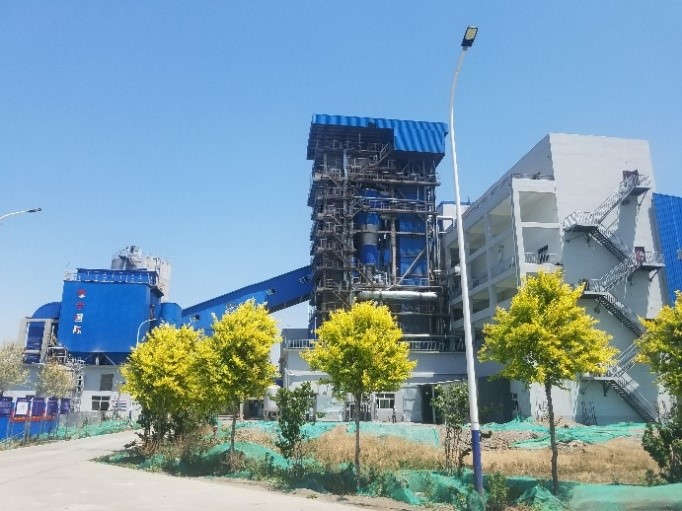
What Role Does Insulation Play in Minimizing Heat Losses?
In industrial boiler systems, heat losses through uninsulated or poorly insulated surfaces are often overlooked, yet they represent a significant source of wasted energy and unnecessary fuel costs. Without adequate insulation, a large amount of heat escapes from piping, tanks, and boiler shells into the surrounding environment. This not only reduces overall system efficiency but also increases operating expenses, ambient temperatures, and even safety risks for personnel. Proper thermal insulation serves as a barrier that minimizes heat flow to the environment, improving performance, reducing fuel consumption, and extending equipment life.
Insulation plays a crucial role in minimizing heat losses by creating a thermal barrier between hot boiler surfaces and the surrounding air. High-quality insulation materials—such as mineral wool, ceramic fiber, or calcium silicate—can reduce heat losses by 80–95%, lower surface temperatures by up to 150°C, and improve boiler efficiency by 2–8%. In addition to conserving energy, effective insulation enhances safety by reducing surface contact temperatures and helps maintain consistent process conditions. Regular inspection and maintenance of insulation layers are vital to ensuring long-term performance and energy savings.
In short, insulation is one of the most cost-effective and impactful methods to conserve energy in industrial boilers, often paying for itself in less than a year through fuel savings.
Thermal insulation only improves safety but does not affect energy efficiency.False
Insulation directly reduces convective and radiant heat losses, improving overall boiler efficiency.
Proper insulation can reduce heat losses by over 80% and save substantial energy costs.True
Insulation acts as a thermal barrier that prevents unnecessary heat escape, reducing energy use and emissions.
1. The Importance of Insulation in Boiler Systems
Boilers operate at very high temperatures—often between 150°C and 500°C—and are surrounded by cooler ambient air. This temperature difference drives continuous heat flow from the boiler’s surface to the environment. Insulation reduces this heat flow by increasing the thermal resistance of the surface. The higher the insulation’s thermal resistance (R-value), the less heat escapes, ensuring that energy generated from combustion is efficiently used to produce steam rather than being lost to the surroundings.
When insulation is missing or damaged:
Flue gas and metal surfaces cool rapidly.
More fuel is required to maintain desired steam pressure.
The boiler’s efficiency can drop by several percentage points.
Surrounding areas become uncomfortably hot, reducing workplace safety.
A properly insulated system maintains thermal equilibrium, keeps the operating environment cooler, and maximizes useful heat utilization.
2. Heat Loss Mechanisms and Insulation’s Role
There are three main types of heat transfer in boilers—conduction, convection, and radiation—and insulation combats each form effectively:
| Heat Transfer Type | Description | Effect of Insulation |
|---|---|---|
| Conduction | Direct heat flow through solid surfaces (boiler shell, piping) | Lowers thermal conductivity, slowing heat flow |
| Convection | Heat carried away by moving air around hot surfaces | Reduces air contact and surface temperature |
| Radiation | Infrared heat emitted from hot surfaces | Reflective outer layers minimize radiative loss |
For example, an uninsulated 150 mm steam pipe at 200°C can lose more than 800 W/m² of heat. Applying 50 mm of mineral wool insulation reduces this loss to less than 100 W/m², representing nearly 90% energy savings.
3. Thermal Performance Comparison of Common Insulation Materials
| Material | Typical Thermal Conductivity (W/m·K) | Max Operating Temp (°C) | Typical Application | Heat Loss Reduction (%) |
|---|---|---|---|---|
| Mineral Wool | 0.045 | 650 | General boiler piping, tanks | 85–90 |
| Calcium Silicate | 0.058 | 1000 | High-temperature boiler walls | 80–88 |
| Ceramic Fiber Blanket | 0.035 | 1200 | Superheater, furnace linings | 90–95 |
| Foam Glass | 0.050 | 400 | Condensate and cold-water lines | 80–85 |
| Aerogel Blanket | 0.018 | 650 | Space-limited, high-performance zones | 95–97 |
Lower thermal conductivity means better insulation performance. For long-term reliability, the material must also withstand vibration, moisture, and temperature cycling.
4. Impact on Boiler Efficiency and Operating Cost
Even small surface areas of heat loss add up significantly over time. Consider the following example:
| Component | Surface Area (m²) | Temp. (°C) | Insulation Condition | Heat Loss (W/m²) | Annual Fuel Cost (USD)* |
|---|---|---|---|---|---|
| Boiler Shell | 25 | 180 | Uninsulated | 650 | $18,000 |
| Main Steam Pipe | 12 | 200 | Uninsulated | 850 | $10,500 |
| Feedwater Tank | 10 | 95 | Uninsulated | 300 | $2,500 |
| With Insulation | — | — | Insulated (50 mm) | <120 | $3,500 Total |
*Assuming 8,000 hours/year, fuel cost $0.08/kWh equivalent.
The insulation investment of around $10,000 results in annual savings exceeding $25,000—paying back within 5–6 months.
5. Safety and Environmental Benefits
Insulation also serves critical safety and environmental functions:
Personnel protection: Reduces exposed surface temperatures below 60°C, preventing burns.
Noise control: Provides acoustic dampening in high-pressure systems.
Emission reduction: Lower fuel consumption means reduced CO₂ and NOₓ output.
Condensation prevention: Insulated cold surfaces minimize corrosion from moisture condensation.
A single 20°C drop in surface temperature can reduce CO₂ emissions by up to 1.5% across a boiler’s annual operation.
6. Inspection and Maintenance of Insulation Systems
Even high-quality insulation degrades over time due to vibration, mechanical damage, or water absorption. Regular inspection ensures long-term effectiveness.
| Inspection Task | Frequency | Common Issues | Preventive Action |
|---|---|---|---|
| Visual Check | Monthly | Cracks, missing sections | Patch and reseal |
| Surface Temperature Scan | Quarterly | Hot spots | Reinforce insulation layers |
| Moisture Detection | Semiannual | Wet insulation | Replace with dry material |
| Insulation Thickness Audit | Annual | Thinning or compaction | Reinsulate as required |
Properly maintained insulation typically lasts 10–15 years, retaining 90% of its initial performance.
7. Case Study: Industrial Steam Plant Insulation Upgrade
A textile factory upgraded insulation across its 20 TPH steam boiler, feedwater tank, and distribution piping.
Before: 210°C surface temperature, flue gas loss 10%, efficiency 87%.
After: 85°C surface temperature, flue gas loss 6%, efficiency 91%.
Results:
Fuel savings: 160 tons/year of natural gas
CO₂ reduction: 290 tons/year
Payback period: 7 months
This case clearly shows that insulation is one of the simplest yet most effective tools for improving energy efficiency.
8. Best Practices for Effective Insulation Design
Choose materials with low thermal conductivity and high temperature resistance.
Ensure proper thickness based on operating temperature (e.g., 50 mm for 200°C pipes).
Seal joints and elbows carefully to prevent air leakage.
Use aluminum or stainless-steel cladding for mechanical protection.
Implement infrared thermography to detect hot spots after installation.
Train maintenance teams to replace insulation immediately after repairs.
Following these best practices ensures consistent thermal protection and prolonged insulation life.
Conclusion
Insulation is one of the simplest and most powerful tools for improving boiler efficiency. By reducing heat losses, it directly lowers fuel consumption, operating costs, and emissions—while also improving safety and comfort in industrial environments. A well-insulated boiler system maintains design efficiency, minimizes environmental impact, and delivers measurable long-term savings. In energy management terms, every degree of heat retained is money saved.
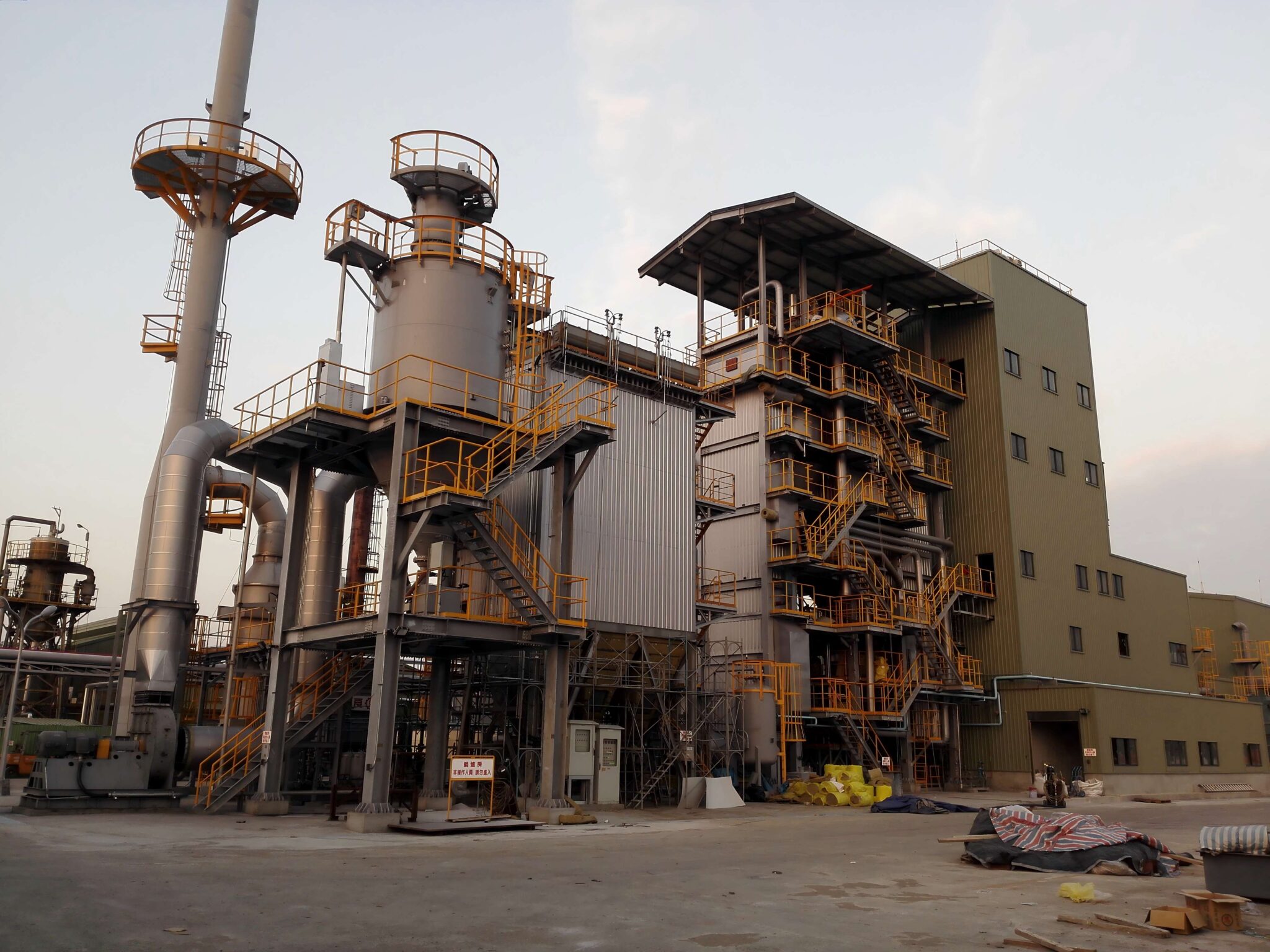
How Can Regular Maintenance Sustain Long-Term Boiler Efficiency?
Industrial and commercial boilers are designed for high performance and longevity, but their efficiency inevitably declines over time without proper maintenance. Neglecting maintenance leads to soot buildup, scaling, air leaks, worn components, and unbalanced combustion — all of which waste energy and increase operating costs. The financial impact of a poorly maintained boiler can be significant: even a 2–3% efficiency drop can cost thousands of dollars in extra fuel annually. Regular maintenance not only preserves performance but also extends equipment life, enhances safety, and ensures compliance with emission standards.
Regular maintenance sustains long-term boiler efficiency by ensuring optimal combustion, clean heat-transfer surfaces, proper water chemistry, and functional auxiliary systems. Scheduled inspections, cleaning, and calibration prevent performance degradation, restore design efficiency, and minimize unplanned downtime. Proper maintenance can reduce fuel use by 5–10%, lower emissions by up to 20%, and extend boiler service life by more than 10 years. Routine upkeep—combined with predictive monitoring—creates a stable, efficient, and reliable boiler system.
In essence, regular maintenance isn’t just an operational routine—it’s an investment in energy conservation, safety, and sustainable productivity.
Boiler efficiency remains constant without maintenance.False
Efficiency naturally declines due to fouling, component wear, and combustion drift; maintenance restores performance.
Regular maintenance can improve fuel economy by up to 10%.True
Cleaning, tuning, and calibration enhance combustion and heat transfer, reducing energy losses.
1. Why Efficiency Declines Without Maintenance
Boiler efficiency depends on how well it converts fuel energy into steam. Over time, several factors degrade this efficiency:
| Efficiency Loss Cause | Description | Typical Impact (%) |
|---|---|---|
| Soot and Scale Build-up | Acts as insulation on heat transfer surfaces | 2–5 |
| Poor Combustion Tuning | Air/fuel imbalance increases flue gas temperature | 1–3 |
| Feedwater Quality Issues | Scaling and corrosion reduce heat exchange | 2–4 |
| Air or Steam Leaks | Wastes energy and lowers system pressure | 1–2 |
| Faulty Controls and Sensors | Inaccurate readings cause overfiring | 1–2 |
When these issues accumulate, the boiler burns more fuel for the same steam output, increasing operational costs and emissions.
2. Core Maintenance Tasks for Efficiency Preservation
Each aspect of boiler maintenance contributes to efficiency differently. A proper maintenance schedule should include the following:
| Maintenance Task | Frequency | Efficiency Benefit | Key Outcome |
|---|---|---|---|
| Burner Tuning and Air Ratio Adjustment | Quarterly | +2–3% | Optimal combustion |
| Soot and Scale Removal | Monthly or as needed | +3–5% | Improved heat transfer |
| Feedwater and Chemical Treatment | Continuous | +1–2% | Reduced scaling/corrosion |
| Control Calibration | Quarterly | +1% | Accurate firing rate |
| Leak Detection and Repair | As needed | +1% | Energy conservation |
| Safety and Pressure Checks | Annual | — | Reliability and safety |
Together, these measures ensure the boiler operates as efficiently as it did when new.
3. Monitoring Indicators of Boiler Efficiency
To maintain long-term performance, operators must track certain key indicators.
| Indicator | Optimal Range | Maintenance Action When Deviated |
|---|---|---|
| Flue Gas Temperature | <200°C (for gas-fired) | Clean heat exchanger |
| O₂ Concentration | 3–5% | Adjust air/fuel ratio |
| CO₂ Concentration | 9–10% | Tune burner |
| Feedwater Hardness | <2 ppm | Improve water treatment |
| Steam Pressure Variation | ±2% | Inspect controls |
| Fuel-to-Steam Ratio | Stable | Review combustion and leaks |
Any long-term deviation signals performance decline and should trigger immediate inspection.
4. Economic Benefits of Preventive Maintenance
Preventive maintenance has measurable economic and operational benefits.
| Maintenance Strategy | Annual Cost (USD) | Energy Savings (USD/year) | Net Gain (USD) | Payback Period |
|---|---|---|---|---|
| Minimal Maintenance | $2,000 | $0 | $0 | — |
| Standard Maintenance | $5,000 | $15,000 | $10,000 | 4 months |
| Comprehensive Predictive Maintenance | $8,000 | $25,000 | $17,000 | 4–5 months |
These savings result from fuel efficiency gains, reduced downtime, and fewer emergency repairs.
5. Preventive vs. Predictive Maintenance
| Maintenance Type | Description | Example Tools | Benefit |
|---|---|---|---|
| Preventive | Regular time-based checks | Scheduled cleaning, calibration | Reduces unplanned failure |
| Predictive | Condition-based monitoring | Vibration analysis, temperature sensors | Detects problems before breakdown |
| Reactive | Repairs after failure | Emergency service | Highest cost and downtime |
Predictive maintenance—supported by digital monitoring—helps sustain performance and optimize maintenance frequency.
6. Technological Tools Supporting Long-Term Efficiency
Modern maintenance benefits from smart technologies:
| Technology | Function | Efficiency Benefit |
|---|---|---|
| IoT Sensors | Continuous temperature, pressure, and O₂ monitoring | Early detection of fouling or imbalance |
| Automated Soot Blowers | Removes deposits without shutdown | Consistent heat transfer |
| Vibration and Acoustic Sensors | Detects fan or pump faults | Prevents mechanical failure |
| AI-driven Control Systems | Adjusts air-fuel ratio in real time | Maintains peak combustion |
| Thermal Imaging Cameras | Identifies insulation damage | Prevents surface heat loss |
These tools create a digital twin of the boiler’s operational state, enabling data-driven decisions.
7. Case Study: Power Plant Boiler Maintenance Optimization
A 40 TPH coal-fired boiler in India experienced efficiency drops from 88% to 84% over 6 months. After introducing:
Automatic oxygen control,
Online flue gas analyzers, and
Monthly tube cleaning,
The plant restored efficiency to 89.5% and reduced annual fuel costs by $80,000. Maintenance also decreased unplanned downtime by 30% and extended the boiler’s life expectancy by 7 years.
8. Environmental and Safety Advantages
Regular maintenance not only improves efficiency but also supports compliance and sustainability:
Lower CO₂ emissions through reduced fuel use.
Less particulate and NOₓ due to cleaner combustion.
Reduced risk of explosion or overheating from leaks or fouling.
Consistent operation within environmental permit limits.
A well-maintained boiler can reduce its carbon footprint by up to 250 tons of CO₂ per year, depending on size and fuel type.
9. Recommended Annual Maintenance Schedule
| Maintenance Activity | Daily | Weekly | Monthly | Quarterly | Annual |
|---|---|---|---|---|---|
| Check pressure, temperature, and leaks | ✅ | — | — | — | — |
| Inspect flame and burner condition | — | ✅ | — | — | — |
| Clean heat transfer surfaces | — | — | ✅ | — | — |
| Tune air-fuel ratio | — | — | — | ✅ | — |
| Test safety valves and controls | — | — | — | — | ✅ |
Following this schedule prevents gradual losses and maintains steady efficiency year-round.
Conclusion
Regular maintenance is the cornerstone of long-term boiler efficiency. It keeps heat transfer surfaces clean, combustion balanced, and mechanical systems reliable. By combining traditional upkeep with digital monitoring and predictive analytics, facilities can achieve stable performance, extend asset lifespan, and significantly reduce energy costs and emissions. A well-maintained boiler doesn’t just last longer—it pays for itself every year through lower operating expenses.
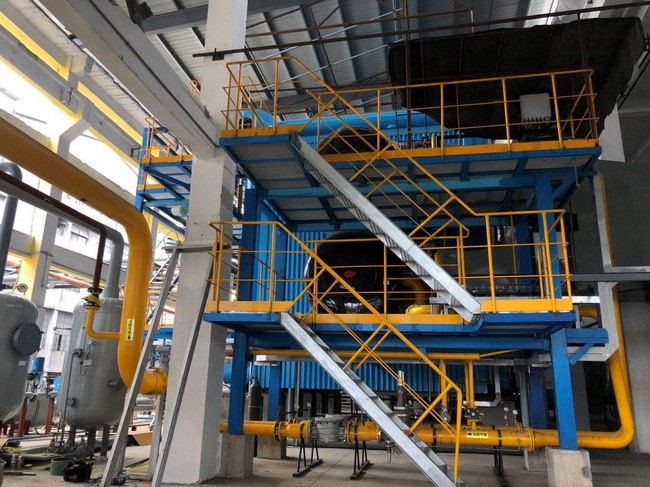
What Monitoring Technologies Help Optimize Biomass Combustion and Energy Output?
In biomass-fired boilers, achieving high combustion efficiency while minimizing emissions is far more complex than with conventional fossil fuels. Biomass fuels vary widely in composition, moisture, and calorific value — leading to unstable combustion if not properly controlled. These fluctuations cause incomplete burning, excess CO emissions, slagging, and efficiency losses. Without accurate real-time monitoring, operators are essentially “flying blind,” wasting fuel and energy. The solution lies in advanced monitoring technologies that measure and control combustion conditions, fuel quality, flue gas composition, and system performance continuously.
Modern monitoring technologies—such as flue gas analyzers, oxygen and CO sensors, moisture meters, thermal imaging, and AI-driven combustion control systems—optimize biomass combustion and maximize energy output. These systems provide real-time data that enables operators to fine-tune air-fuel ratios, maintain stable flame temperature, minimize unburned carbon, and improve boiler efficiency by 5–10%. Integration of IoT and predictive analytics further enhances process stability, reduces maintenance costs, and ensures emission compliance.
In short, digital monitoring transforms biomass boilers from variable, fuel-dependent systems into smart, self-optimizing energy producers that deliver consistent performance and sustainability.
Biomass boilers do not require monitoring for efficient operation.False
Biomass fuel variability makes monitoring essential for stable combustion, efficiency, and emission control.
Flue gas and oxygen monitoring can improve biomass boiler efficiency by 5–10%.True
Continuous combustion monitoring enables real-time control of air supply and reduces unburned losses.
1. Why Biomass Combustion Monitoring Matters
Biomass fuels—such as wood chips, rice husks, bagasse, and sawdust—differ significantly in moisture, ash content, and particle size. These variables alter combustion temperature and air requirements, affecting efficiency. Without proper monitoring, boilers often operate with:
Excess air (leading to heat losses),
Incomplete combustion (causing CO and soot formation), and
Slagging and fouling (reducing heat transfer).
Monitoring provides continuous feedback to the control system, maintaining the optimal stoichiometric balance between oxygen and fuel. This ensures maximum heat extraction with minimal waste.
| Parameter | Optimal Range | Effect if Out of Range |
|---|---|---|
| Flue Gas O₂ | 5–8% | Too low → CO formation; Too high → heat loss |
| Flue Gas CO | <200 ppm | Indicates incomplete combustion |
| Flame Temperature | 850–950°C | Low → poor ignition; High → slagging |
| Fuel Moisture | <20% | High → efficiency loss, unstable combustion |
By tracking these parameters, operators can continuously optimize combustion for both performance and environmental compliance.
2. Key Monitoring Technologies in Biomass Boilers
| Technology | Function | Measured Parameter | Efficiency Impact | Typical Gain (%) |
|---|---|---|---|---|
| Flue Gas Analyzer | Monitors O₂, CO, CO₂, NOₓ levels | Combustion gas composition | Real-time air-fuel control | +3–5 |
| Thermocouples and IR Sensors | Measure furnace and flue gas temperature | Flame and gas temperature | Detects incomplete combustion | +2 |
| Moisture Analyzer | Tests incoming fuel | Fuel moisture content | Adjusts drying or feed rate | +1–2 |
| Airflow and Pressure Sensors | Track primary and secondary air supply | Air distribution | Stabilizes combustion | +1 |
| Particulate Emission Sensors | Measure dust and ash levels | Fly ash and PM | Improves emission compliance | — |
| Thermal Imaging Cameras | Detect temperature uniformity | Hot/cold spots | Prevents slagging and cold zones | +1–3 |
| Online Ash Analyzer | Measures ash composition and fusion temp | Mineral content | Prevents fouling | +2 |
| AI-based Combustion Control | Adjusts air-fuel mix dynamically | All key parameters | Integrated optimization | +5–10 |
These technologies work together within a control system, turning real-time measurements into actionable control decisions.
3. Combustion Control Through Real-Time Monitoring
Biomass combustion efficiency is governed by air-fuel ratio and flame temperature stability. Advanced monitoring systems dynamically adjust these parameters using continuous feedback:
Oxygen Trim Control: Adjusts secondary air flow based on O₂ readings.
CO Control: Fine-tunes burner settings to minimize incomplete combustion.
Temperature Profiling: Ensures uniform combustion zones.
Fuel Feed Optimization: Modulates feeder speed according to load and moisture data.
Ash Behavior Monitoring: Prevents slagging by maintaining temperature below ash fusion point.
| Control System Type | Sensor Inputs | Control Outputs | Response Time |
|---|---|---|---|
| Basic Analog | O₂, Pressure | Damper position | 30–60 sec |
| PLC-based | O₂, CO, Temp | Air valves, feed rate | 10–15 sec |
| AI/IoT-Integrated | O₂, CO, Temp, Moisture | Burner and fan control | <5 sec |
Modern AI-augmented control systems learn from historical data to predict fuel behavior, further stabilizing performance and reducing manual intervention.
4. Data Visualization and Energy Management Platforms
Digitalization has brought advanced analytics to boiler monitoring. Smart dashboards integrate multiple parameters, allowing operators to monitor efficiency in real time.
| Dashboard Metric | Description | Action Trigger |
|---|---|---|
| Combustion Efficiency (%) | Ratio of energy utilized vs. input fuel energy | <85% triggers tuning |
| Heat Rate (kJ/kWh) | Energy required to produce electricity or steam | Rising trend indicates fouling |
| Excess Air (%) | Real-time air deviation | >25% signals over-ventilation |
| Emission Levels (CO, NOₓ, SO₂) | Stack gas composition | Out-of-limit values trigger maintenance |
| Fuel Moisture Trend | Time-based fuel condition data | Used for feed adjustment |
These digital systems also enable remote monitoring, predictive alerts, and historical trend analysis—supporting proactive decision-making.
5. Case Study: 20 MW Biomass Power Plant in Scandinavia
A biomass power plant burning mixed wood residues struggled with fluctuating efficiency (83–88%) and CO spikes up to 500 ppm. After installing:
Continuous flue gas analyzers,
Fuel moisture sensors, and
AI-based oxygen trim controls,
the plant achieved:
Stable efficiency of 91–92%,
CO emissions below 150 ppm,
Fuel savings of 6%, and
Reduced soot blow frequency by 30%.
This demonstrates the high ROI and sustainability benefits of advanced combustion monitoring.
6. Integration with Predictive Maintenance Systems
Monitoring systems don’t just improve combustion — they also predict mechanical degradation:
Vibration and acoustic sensors detect fan and blower wear.
Infrared thermography identifies insulation damage or leakage.
Data analytics predict fouling trends and schedule cleaning before efficiency drops.
Combining combustion monitoring with predictive maintenance results in a self-correcting, adaptive system that maintains long-term efficiency and reliability.
7. Environmental Compliance Through Monitoring
Biomass boilers must meet strict emission limits under EU Industrial Emissions Directive (IED), US EPA NSPS, and ISO 14001 environmental standards.
Continuous Emission Monitoring Systems (CEMS) track pollutants in real time and provide automatic data logs for compliance reports.
| Parameter | Regulatory Limit (Typical) | Monitoring Method |
|---|---|---|
| CO | <250 mg/Nm³ | Infrared sensor |
| NOₓ | <200 mg/Nm³ | Chemiluminescence |
| SO₂ | <50 mg/Nm³ | UV fluorescence |
| Particulate Matter | <50 mg/Nm³ | Opacity or triboelectric probe |
Automated compliance reporting minimizes the risk of fines and improves the plant’s sustainability profile.
8. Future Trends: AI, Digital Twins, and IoT Integration
Next-generation monitoring technologies integrate machine learning and digital twin models:
Digital Twin Models: Virtual replicas simulate combustion behavior and predict performance under different fuel mixes.
AI Predictive Control: Uses historical sensor data to anticipate changes in fuel quality.
IoT Cloud Platforms: Connect multiple boilers for centralized performance management.
Blockchain Data Logs: Secure operational data for compliance and traceability.
These innovations represent the next step toward autonomous, self-optimizing biomass energy systems.
Conclusion
Monitoring technologies form the foundation of modern biomass boiler optimization. From O₂ and CO sensors to advanced AI-driven control systems, each component plays a vital role in maintaining combustion balance, improving energy efficiency, and ensuring emission compliance. With real-time data and intelligent automation, facilities can extract maximum value from variable biomass fuels, minimize fuel waste, and operate with consistent environmental responsibility.
In today’s energy landscape, efficient biomass combustion isn’t achieved by chance—it’s sustained through precision monitoring and smart control.
🔍 Conclusion
The efficiency of an industrial biomass boiler is determined by fuel quality, combustion management, and system maintenance. Optimizing these factors not only improves energy conversion efficiency but also supports cleaner, sustainable, and more reliable industrial operations.
📞 Contact Us
💡 Looking to improve your biomass boiler efficiency? We provide fuel testing, combustion tuning, and system optimization services for all types of industrial biomass boilers.
🔹 Contact us today to enhance your biomass boiler’s performance and sustainability. 🌿🔥🏭✅
FAQ
Q1: What are the main factors affecting industrial biomass boiler efficiency?
A1: The efficiency of industrial biomass boilers depends on five primary factors: fuel quality, moisture content, combustion control, heat recovery systems, and regular maintenance. High-quality biomass fuel with consistent size and low moisture ensures efficient combustion. Advanced combustion control systems regulate air-fuel ratios, minimizing unburned fuel and heat loss. Heat recovery equipment, such as economizers, captures waste heat to improve thermal performance. Lastly, preventive maintenance helps avoid fouling, corrosion, and scaling that reduce heat transfer efficiency.
Q2: How does biomass fuel quality impact boiler efficiency?
A2: Fuel quality plays a crucial role in determining biomass boiler efficiency. Biomass with high moisture content requires additional energy for drying, reducing combustion temperature and overall efficiency. Ideally, moisture should be below 15–20%. Consistent fuel size and composition promote stable combustion, while contaminated or irregular biomass causes slagging and incomplete burning. Using certified biomass fuels, such as wood pellets or agricultural residues with controlled properties, ensures predictable energy output and cleaner operation.
Q3: Why is combustion control important in biomass boilers?
A3: Effective combustion control optimizes the balance between fuel feed rate and air supply. Too little air leads to incomplete combustion and high carbon monoxide (CO) emissions, while excess air cools the combustion chamber and wastes heat. Modern biomass boilers use oxygen sensors, automated control systems, and variable-speed fans to maintain ideal combustion conditions. This automation enhances thermal efficiency, reduces emissions, and ensures consistent steam output, even under fluctuating load demands.
Q4: How do heat recovery systems improve biomass boiler efficiency?
A4: Heat recovery systems significantly boost biomass boiler efficiency by capturing energy that would otherwise escape through exhaust gases. Devices like economizers, air preheaters, and condensing heat exchangers reclaim waste heat to preheat feedwater or combustion air. This reduces the amount of fuel required to generate steam. Properly designed and maintained heat recovery equipment can increase boiler efficiency by 5–10%, lower fuel consumption, and decrease carbon emissions.
Q5: How does maintenance influence biomass boiler performance?
A5: Regular maintenance and cleaning are vital for maintaining high efficiency in biomass boilers. Biomass combustion can produce ash and soot that accumulate on heat transfer surfaces, reducing efficiency. Routine tasks include ash removal, tube cleaning, sensor calibration, and inspection of refractory linings. Preventive maintenance not only extends boiler lifespan but also ensures stable performance, minimizes downtime, and keeps efficiency close to its designed level. Well-maintained boilers can operate up to 90% efficiency or higher under optimal conditions.
References
Improving Biomass Boiler Efficiency – https://www.energy.gov/ – U.S. Department of Energy
Biomass Boiler Operation and Maintenance Guide – https://www.carbontrust.com/ – Carbon Trust
Combustion Efficiency in Biomass Systems – https://www.iea.org/ – International Energy Agency
Boiler Efficiency Calculation Methods – https://www.engineeringtoolbox.com/ – Engineering Toolbox
European Biomass Association (AEBIOM) Efficiency Standards – https://bioenergyeurope.org/ – Bioenergy Europe
Ash and Fouling Control in Biomass Boilers – https://www.sciencedirect.com/ – ScienceDirect
ISO 50001 Energy Management Systems – https://www.iso.org/iso-50001-energy.html – ISO
Heat Recovery Techniques for Biomass Boilers – https://www.researchgate.net/ – ResearchGate
Best Practices for Biomass Fuel Handling – https://www.spiraxsarco.com/ – Spirax Sarco
Global Biomass Boiler Market Insights 2025 – https://www.marketsandmarkets.com/ – Markets and Markets

Wade Zhang
Top 5 Key Factors Affecting Industrial Biomass Boiler Efficiency Read More »

